If our first Indian stopover, in Verkala, was imbued in Indian-ness, due to the Hindu-centric activities of the holy beach near the town’s 2000 year old Hindu temple, Kochin is an entirely different experience.
It is the multiplicity of foreign influences ~ a key part of Kochin ~ which predominates. The triumverate of successive colonial empires, first the Portuguese, then the Dutch, and finally the British, have left a collection of architectural work that gives the older section of Kochin its distinctive charm.
“Chinese fishing nets” were introduced by Portuguese settlers from Macau (next to Hong Kong) to industrialize fishing in their new colony in Kochin.
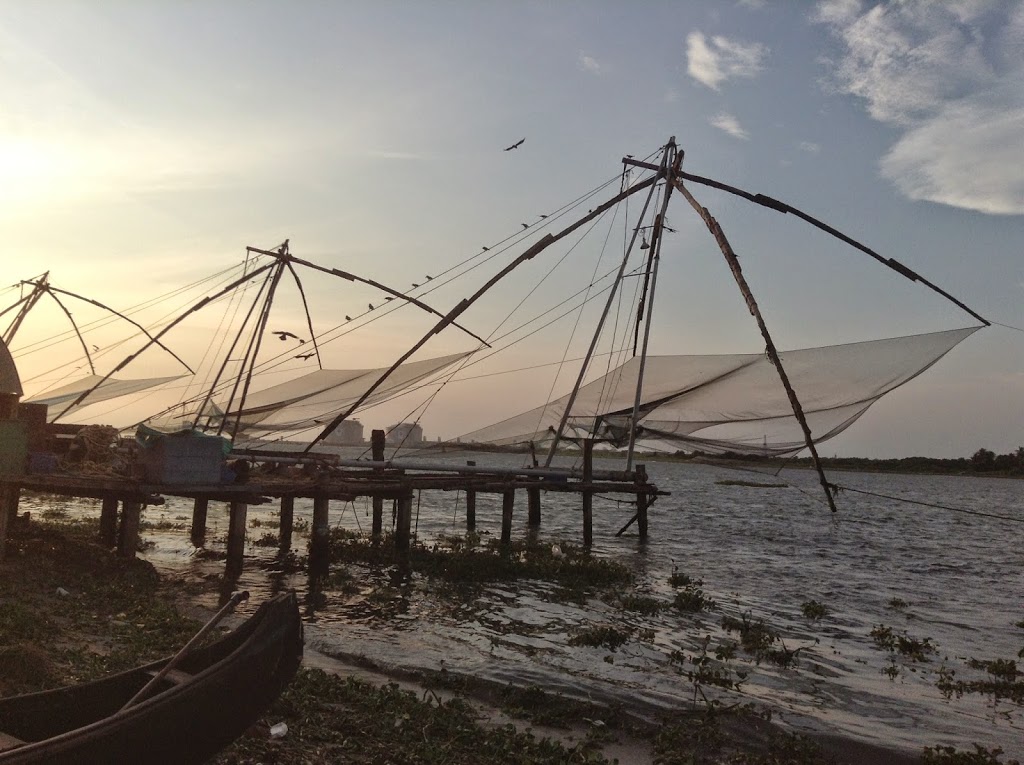 |
| These fishing nets are “shore operated lift nets” – They are large mechanical structures that hold out horizontal nets of 20 meters or more across. |
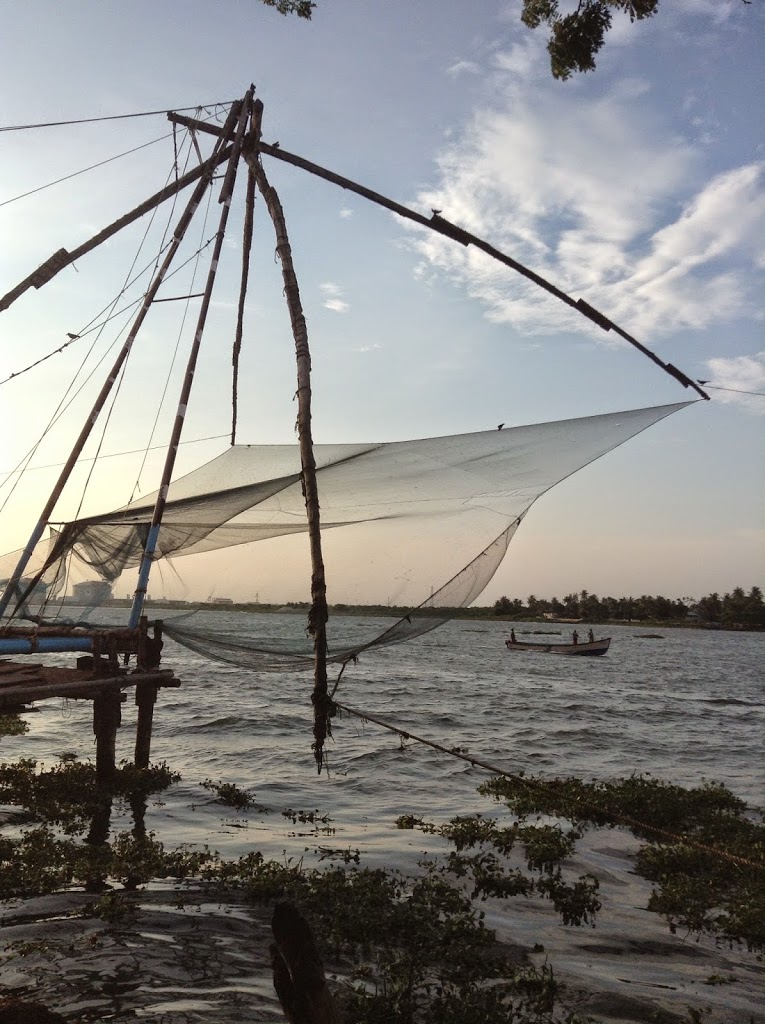 |
| The nets require teams of 6 fishermen to operate them. |
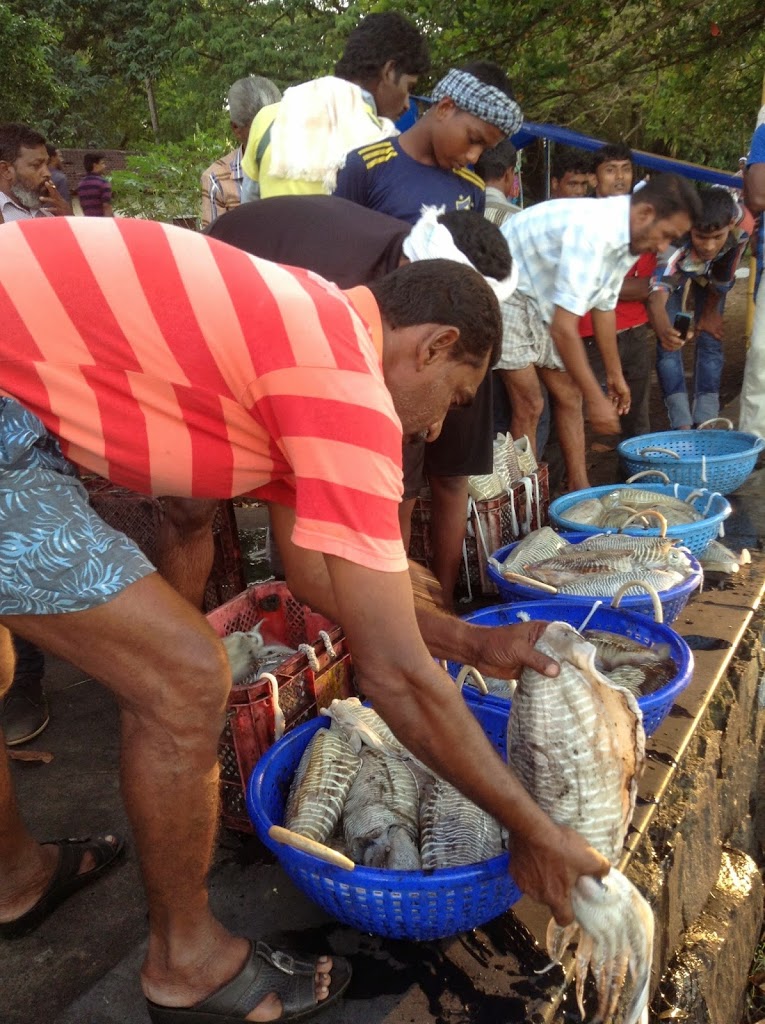 |
| Fishermen are more likely to use fishing boats today to bring in their catches. These buckets are all full of very large striped, lifeless octopus. The fisherman is squeezing out the excess black ink. |
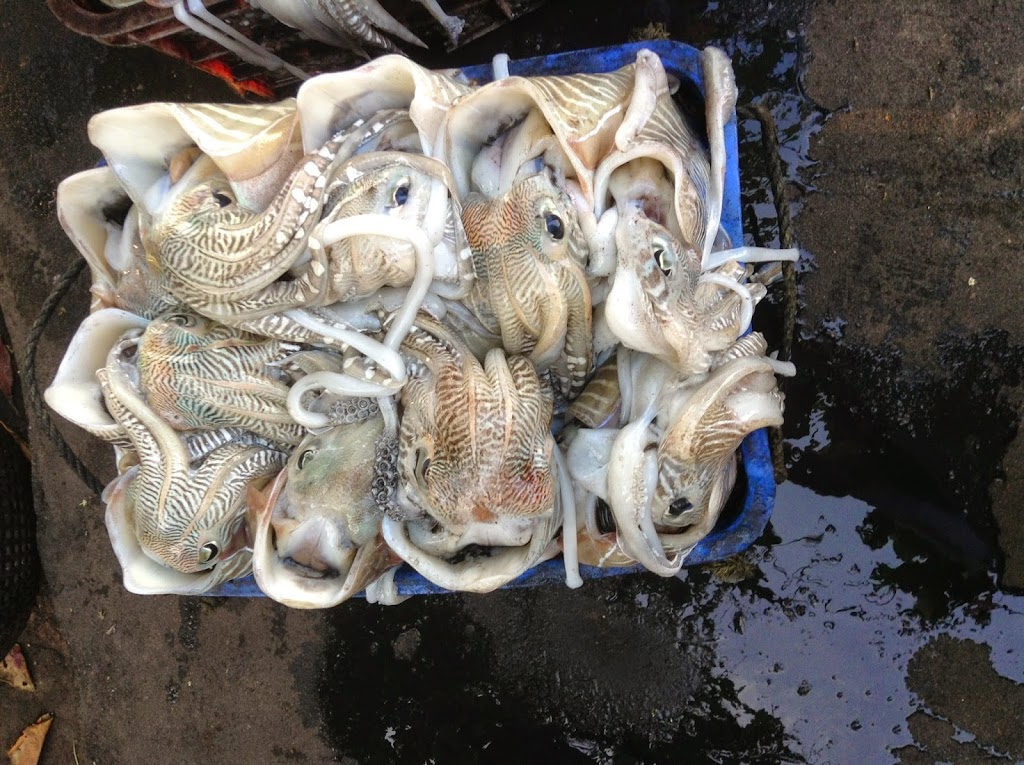
Strolling past the Chinese fishing nets to the beach is a late afternoon pastime that seems to get throngs of locals to the waters’ edge. There is the smell of salt and fish in the air, and the sand is a soft pinky tone in the last of the days rays. No one is rushing, no one is leaving. There is a magical feel to the scene which unfolds in front of us and in which we too participate enjoying the end of the day.
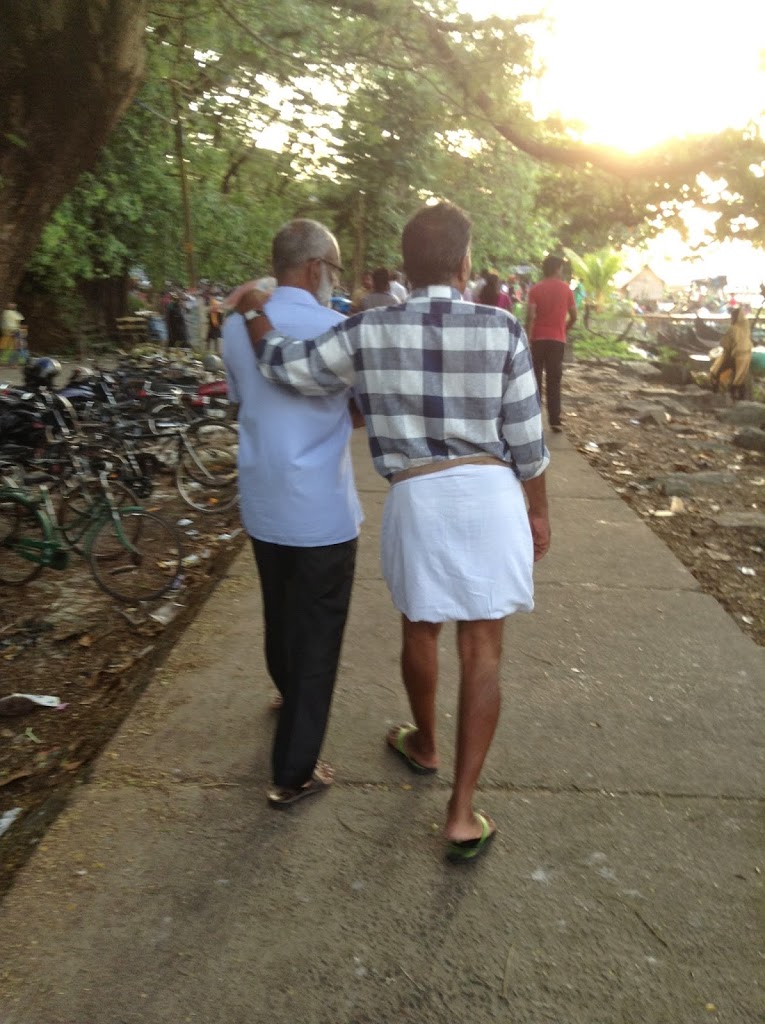 |
| It is not uncommon to see men friends expressing physical closeness to one another. |
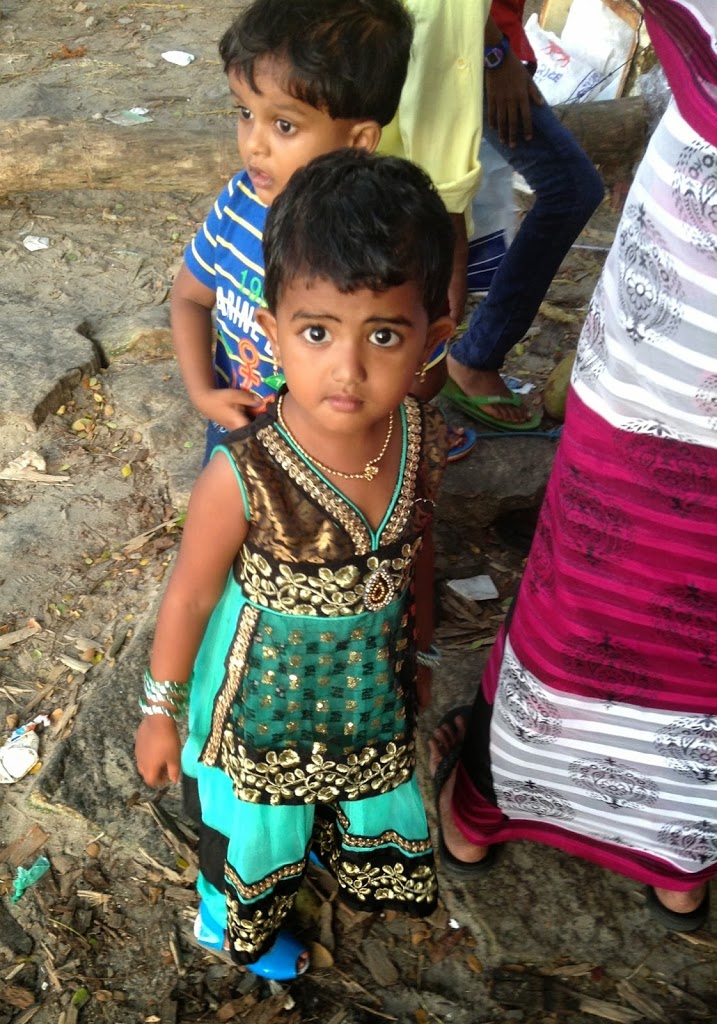 |
| Huge black eyes and terracotta colored skin contrast beautifully with the jewel toned outfits. |
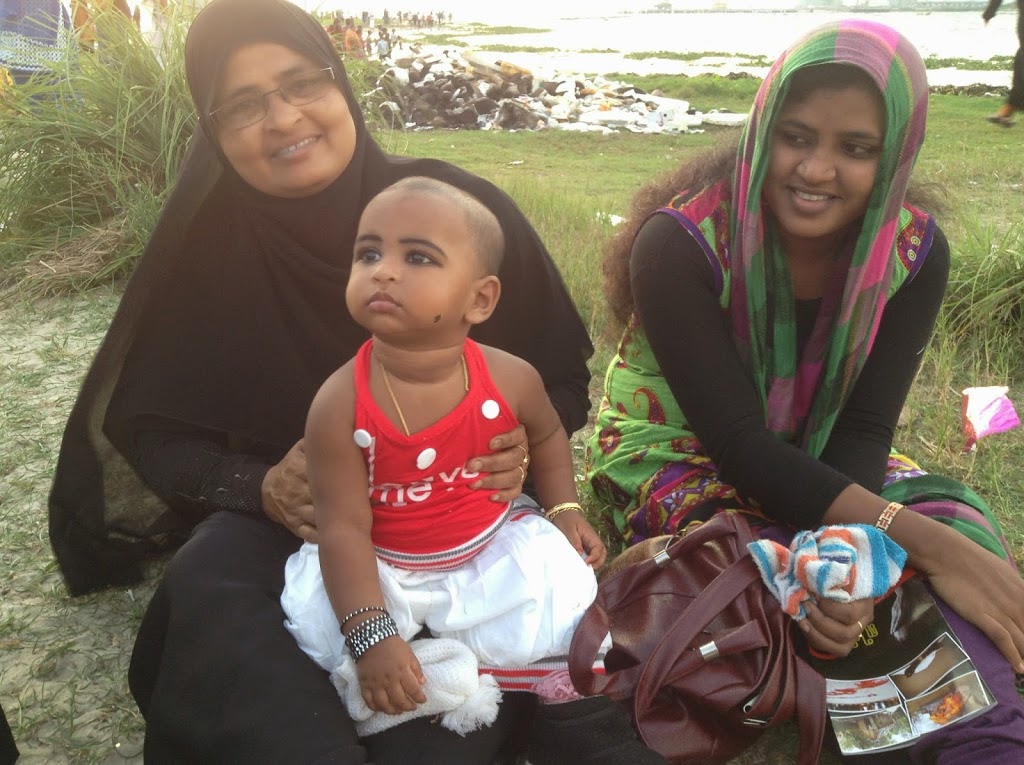 |
| It is not uncommon for toddlers both boys and girls, to have kohl eyeliner applied daily by their parents around their eyes and emphasizing their eyebrows. |
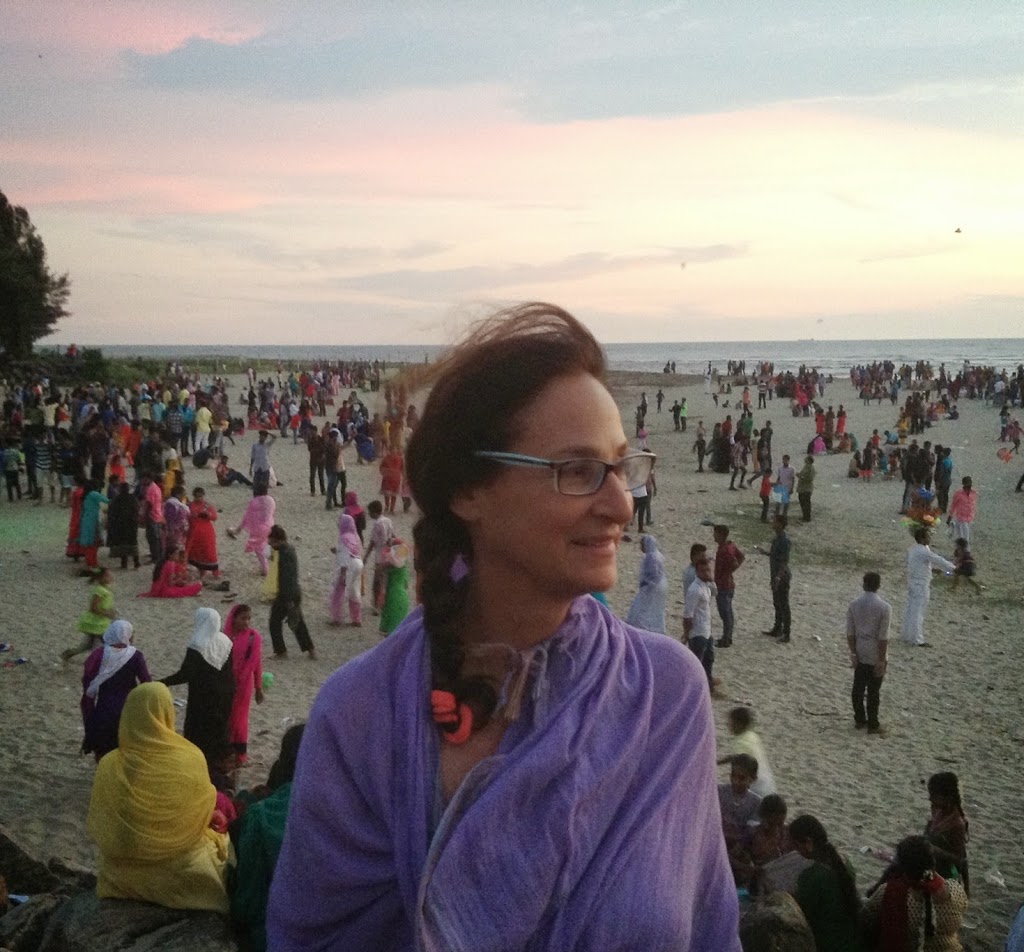 |
| Enjoying the magic! |
We are staying in a small home stay (they rent out 3 bedrooms) on the edge of the town, allowing us to experience Keralan hospitality and also give business to a local family.
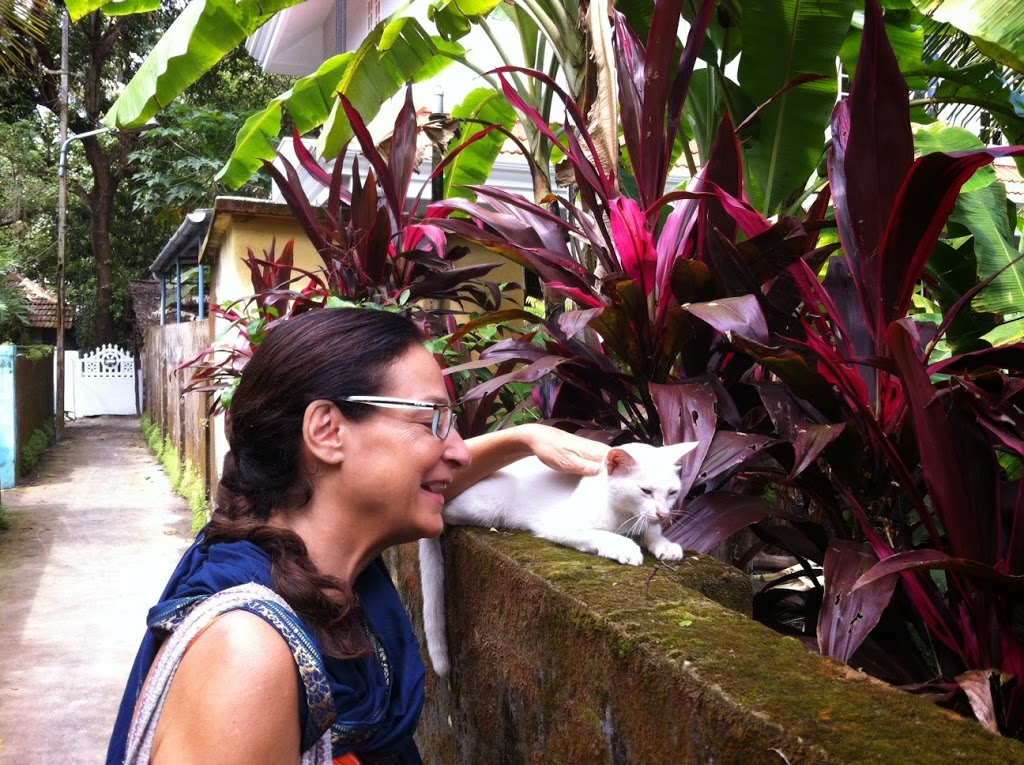 |
| Always time to say hi to a kitty along the way. |
 |
| Our Kochi homestay at “Sea Hut View” on Beach road. The smiley super friendly mom!
|
 |
| School girls arriving in their school uniforms. On foot, or being dropped off by tuk tuk or motorbike, car or by bus. |
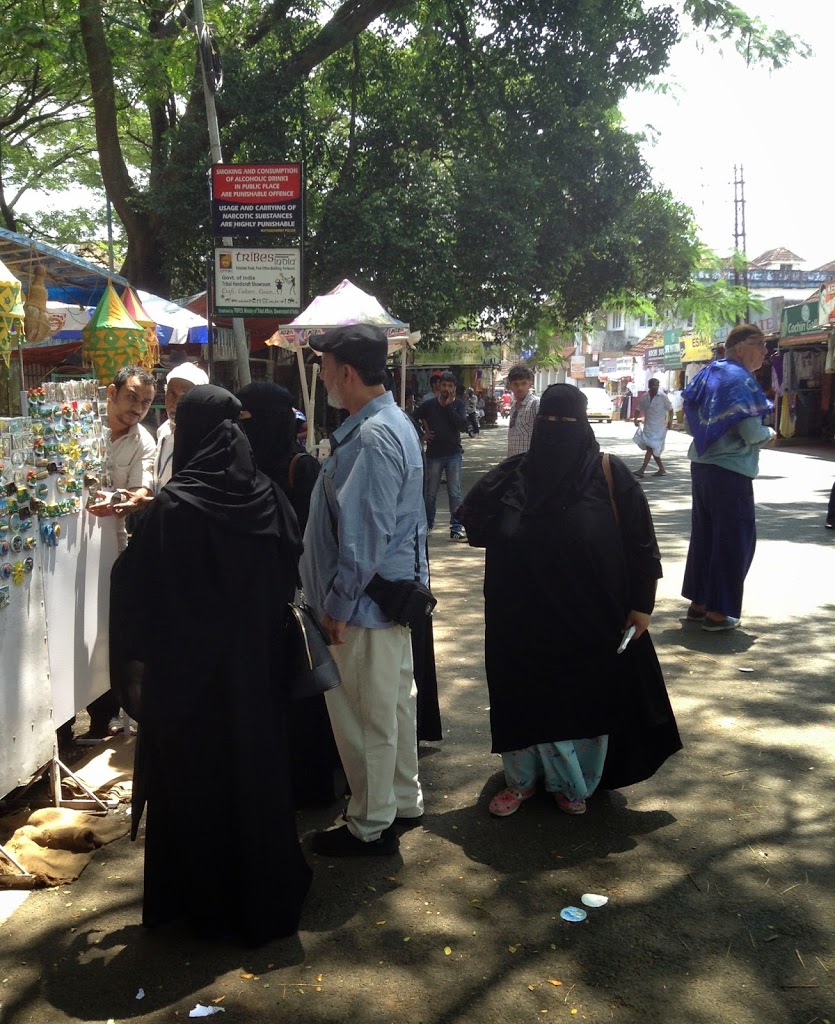 |
| The population is a combination of predominantly Hindu, Muslim and Christian religions. |
Long before the Colonial influences, starting in the mid 1500 with Portuguese traders, Kochin had become the home for another foreign enclave ~ A Jewish population.
The spice trade was the Jewish community’s main occupation. Kochin’s architecture still reflects the presence of large old spice warehouses and the spice trade remains vibrant to this day. These are the myriad spices from Kerala which give Keralan cuisine its distinctive flavors.
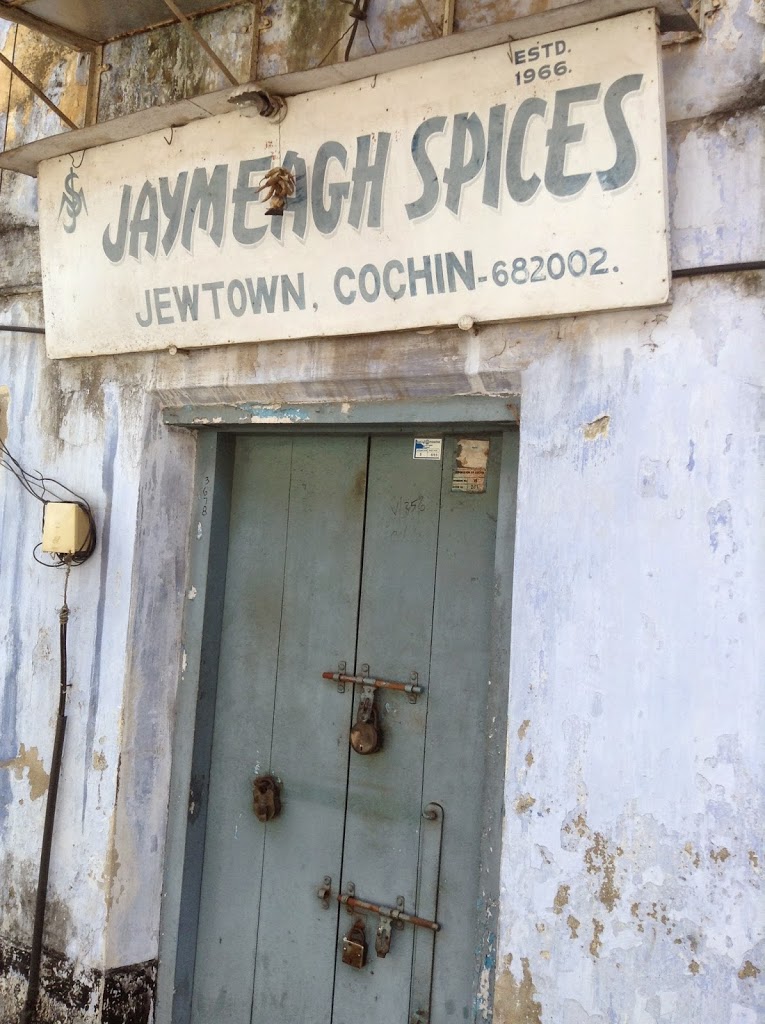 |
| Today the area is called Jew Town and has little shops selling antiquities, clothes and challah covers. |
 |
| Bags of fresh spices. Nutmeg, pepper, cinnamon, tumeric, cardamon. All of which are ground into powdered spices for cooking. |
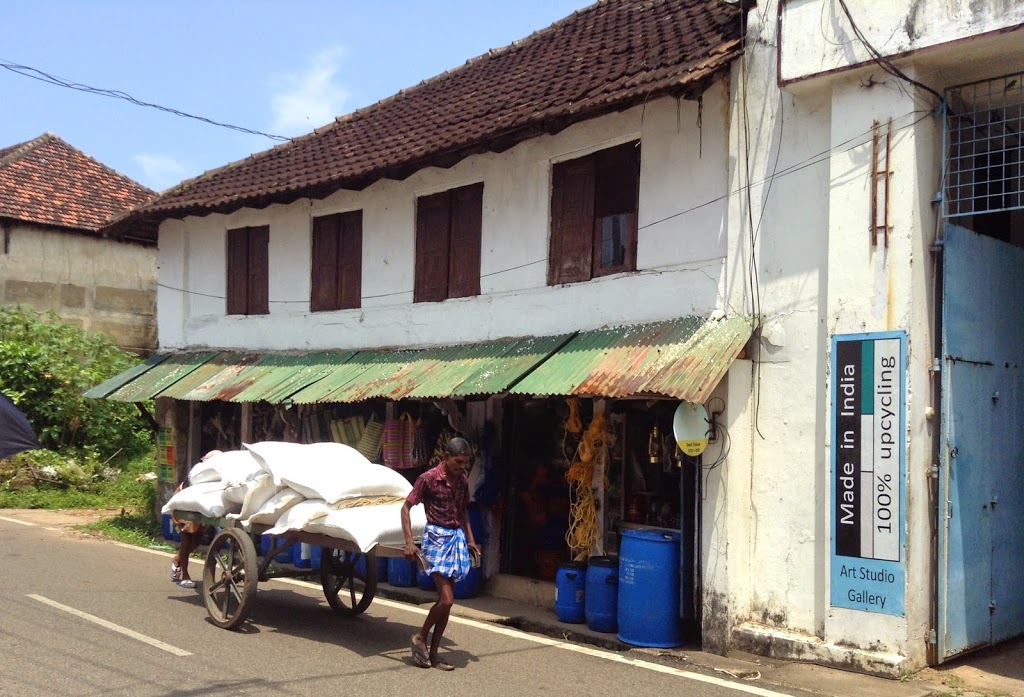
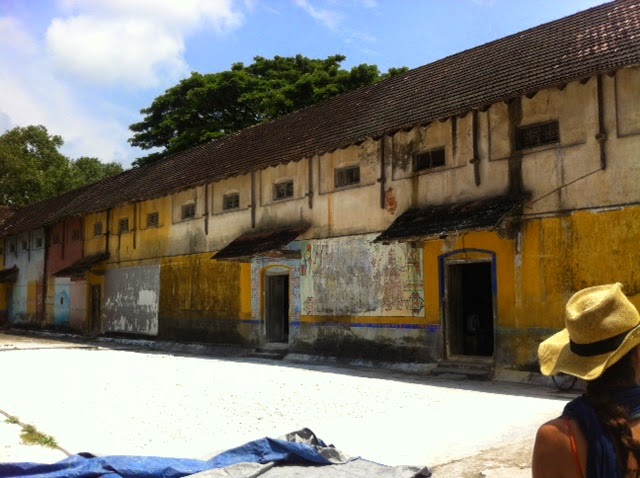
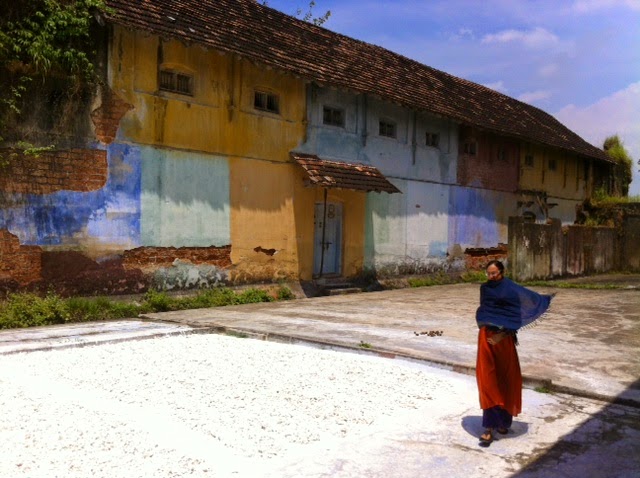 |
| This courtyard is full of white ginger drying on the ground. |
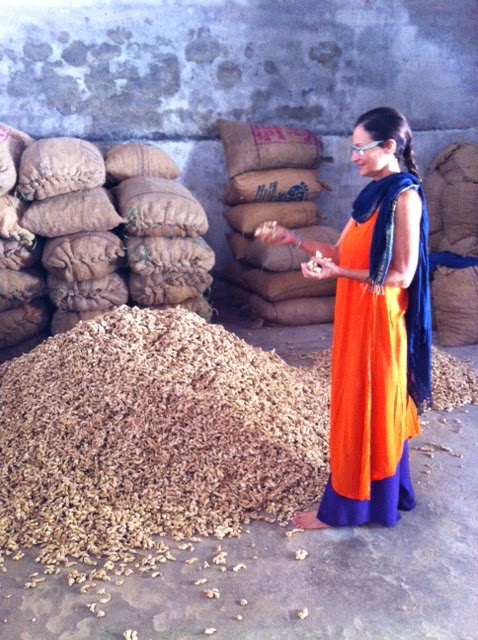 |
| Piles and bags of dried ginger. |
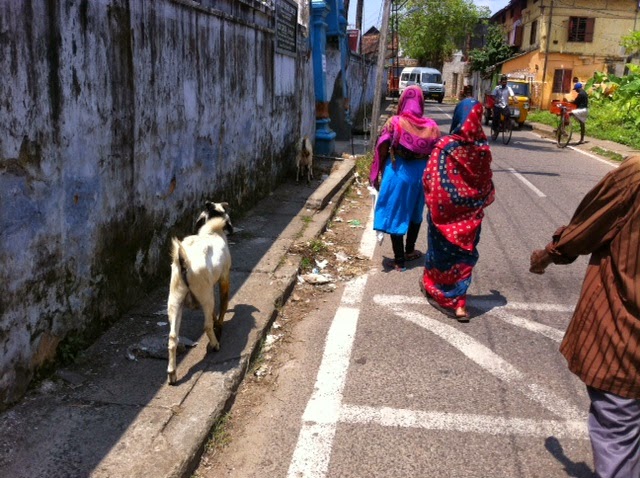
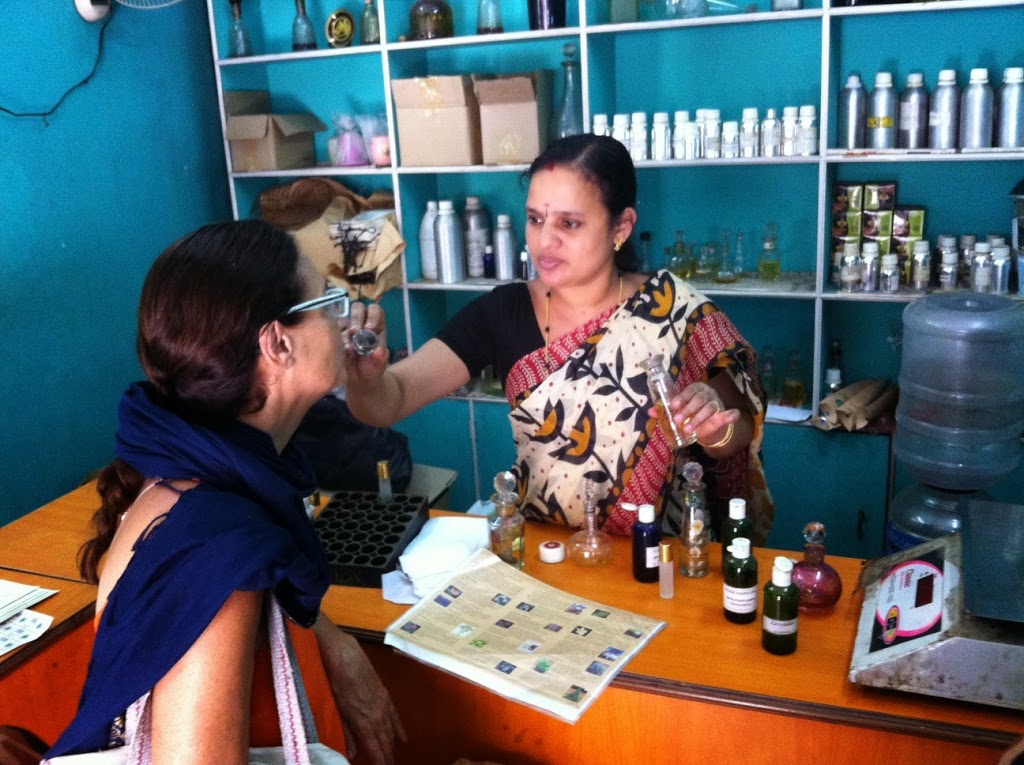 |
| Fragrant oils are another specialty. Smelling the different aromas and learning about the medicinal benefits of oils from plants such as jasmine, basil, lemongrass and orchids. |
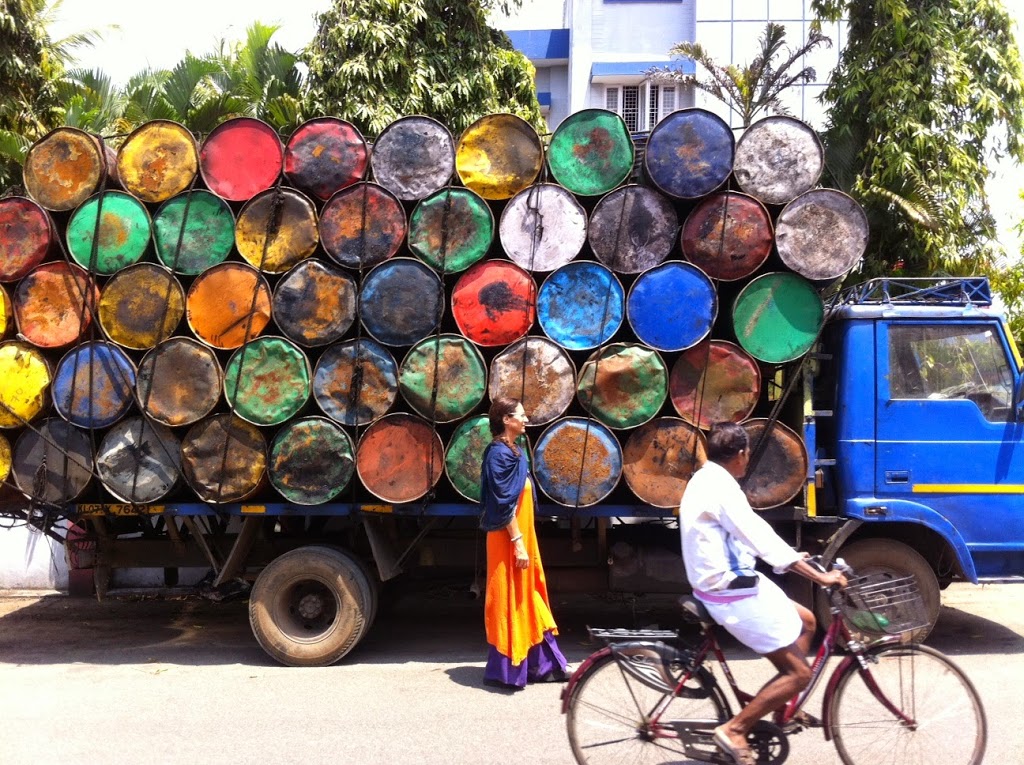
While historians dispute specific details about how the Jewish community originated in Kochin (then called Cranganore), there is academic agreement that it is an undisputed fact of history that from the 5th to the 15th Century, the Jews in Cranganore had virtually an independent principality ruled over by a Prince of their own race and choice. In his book “Noticias dos Judeos de Cochim” the oldest printed book on Kochin Jewish history, Moses de Paiva, a Dutch Jew who visited Kochin in 1686 writes that seventy to eighty thousand Jews (70,000!) arrived on the coast of now Kochin in 370 A.D. from Mayorca.
A second wave of Jews settled in several communities across India a thousand years later, around 1500, from Spain. Marco Polo is one traveller who makes mention of the thriving trading Jewish communities of India during his travels to the Orient.
But then the trajectory of history changed radically for Jews in India. The Moors, coming from the Northern States, started to gain prominence in the country and in 1524, on the pretext that the Jews were tampering in the pepper trade, the Moors made an onslaught on the Jews, burning their houses and synagogues. The destruction was so complete that when the Portuguese arrived in Cranganore in the beginning of the 16th Century, they found only a few Jewish families scattered in various towns.
Due to the devastation of the country by sword and by fire, most Jewish families finally deserted their various settlements established around the country and fled to a last “hold out” ~ Kochin, and placed themselves under the protection of the Hindu Rajah of Kochin.
The Kochin community maintained its presence and still to this day, a few families remain who use the Synagogue of Kochin every Shabbat and on holidays. In 1968, the Kochin synagogue celebrated its 400th anniversary. Unlike their counterparts in Europe, the toleration of Hindu rulers and the fraternal feeling of all the communities in Malabar, enabled the Jews in Kerala to weather the stormy events of history and survive for nearly two thousand years in India.
Ultimately, the establishment of the Jewish State of Israel brought an immediate response from the religious Jews of Kerala. History records that the emigration that followed was not motivated by intolerance or discrimination by government of by external political or social pressure, but to the remaining families deep sense of religious fervor to live and die in the Holy land.
As of 2014, there remain 32 Jews in and around Cochin. (We just missed attending services at the synagogue in Kochin for Yom Kippur a few days before!)
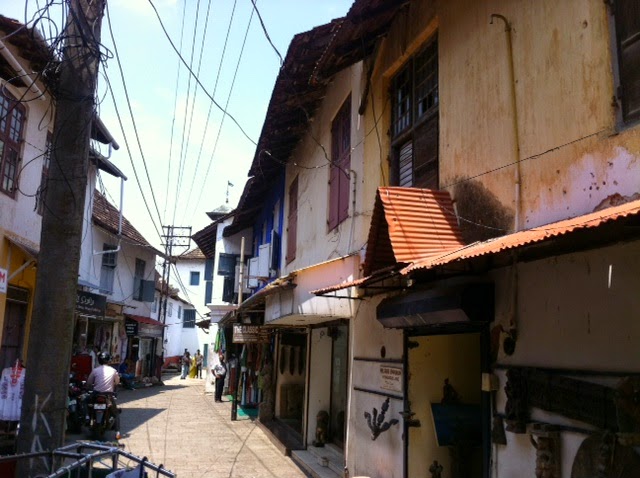 |
| Walking down the street which has the last synagogue in Kochin. |
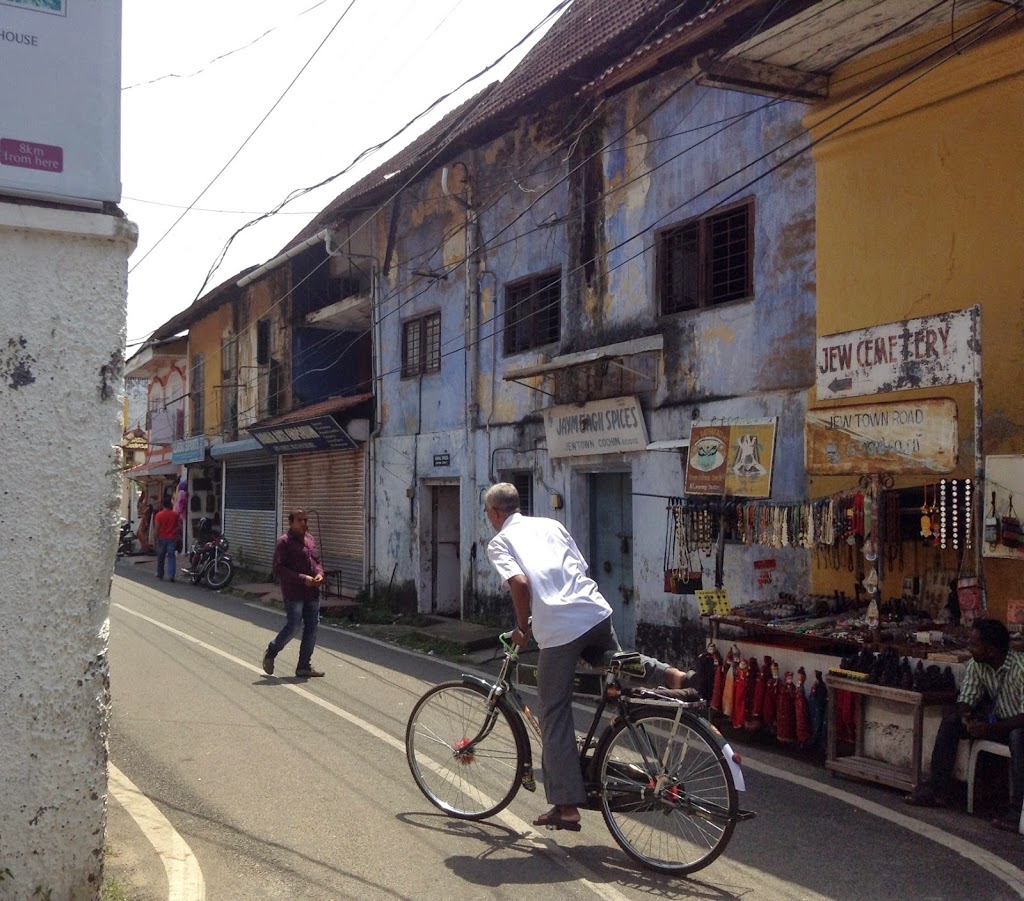
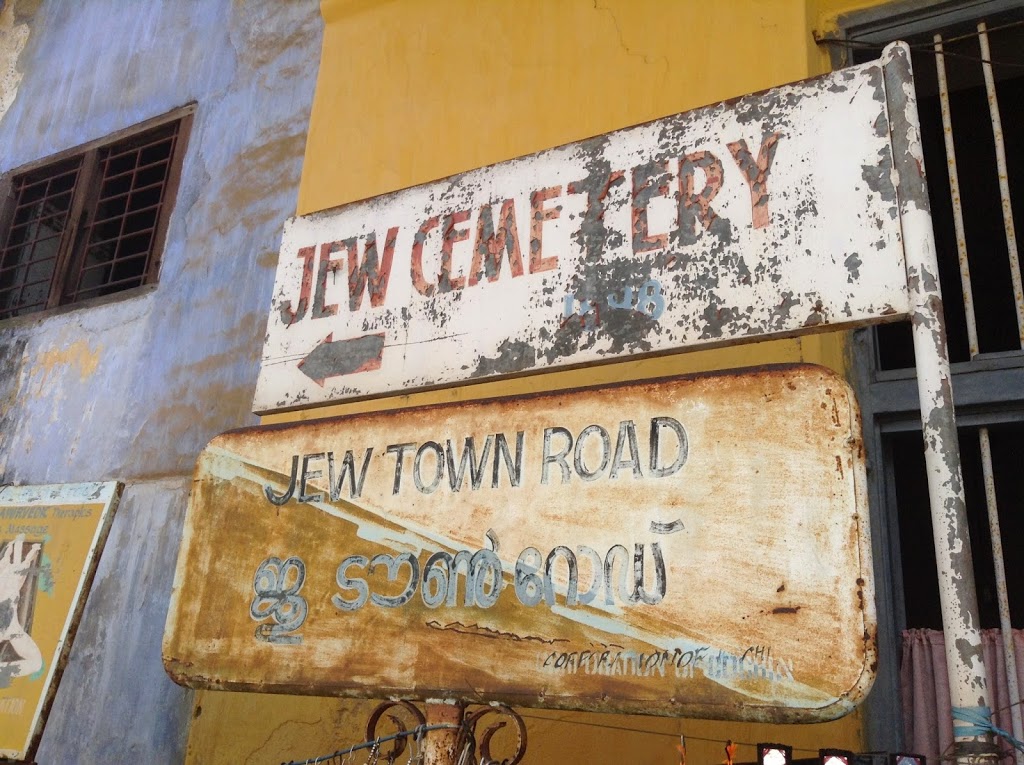
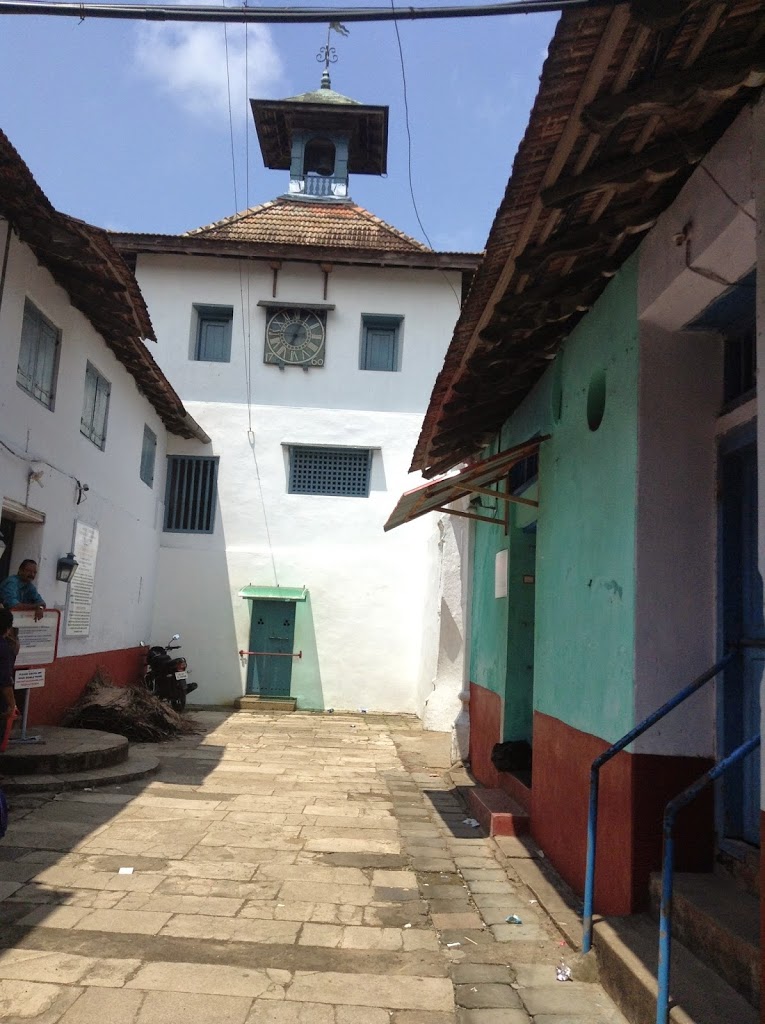 |
| This is the courtyard directly outside the remaining Paradesi Synagogue. |
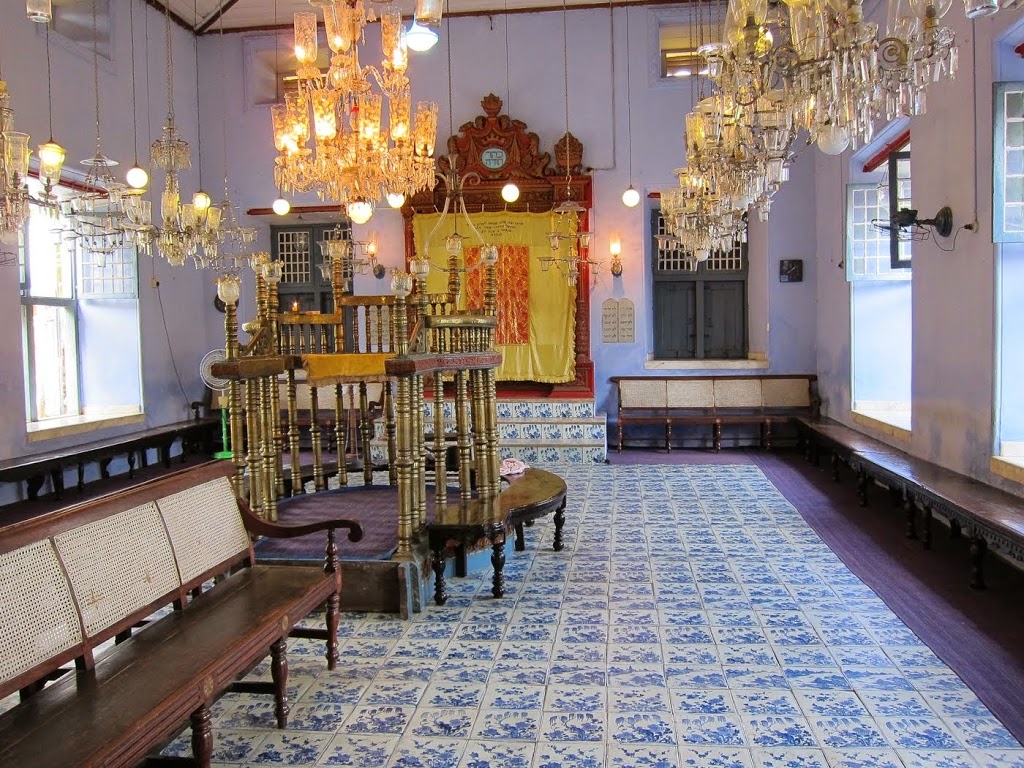 |
| A small cosy synagogue with European floor tiles in blue and white (all different) and European chandeliers. |
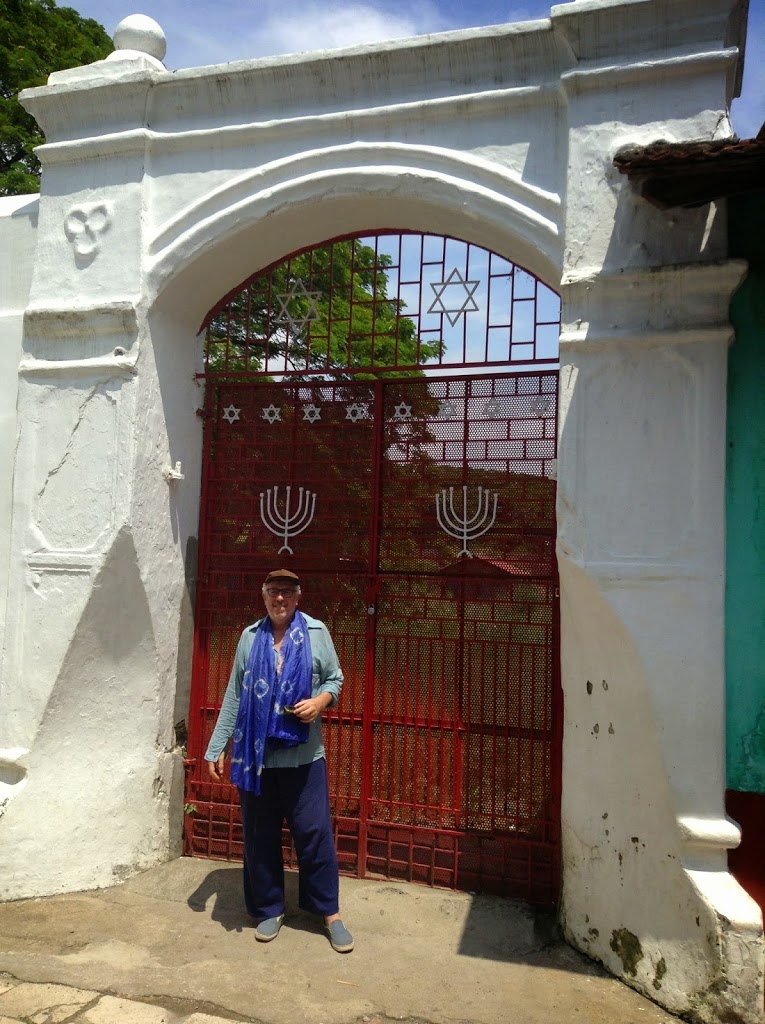 |
| Outside the front of the Paradesi Synagogue. |
Yet, notwithstanding the external influences, there is a strong Keralan culture that permeates Kochin.
For years and years, my close friend Lois, (who lives in Cincinnati) has been telling me about Indian dance in Kerala. Lois’ study and practice of traditional Indian dancing many years prior, led her to a knowledge of the cultural arts in Kerala. I am very excited at being at the Kerala Kathakali Center in order to experience the traditional art form of Kathakali.
Kathakali is one of the oldest theater forms in the world. It originated in the area of South Western India, now known as the state of Kerala. Kathakali is a group performance in which dancers take various roles traditionally based on themes from Hindu mythology, especially the two epics, the Ramayan and the Mahabharata. One of the most interesting aspects of Kathakali is its very elaborate make up. Characters are categorized according to their nature which determines the colors used in the make up.
We attended one of the daily performances, which included the make up application, which is so intricate, that it becomes an art form in and of itself. It took over an hour for each performer to carefully transform himself into his role during the process of applying his face make up. The most intricate make up of the main character, was also added to by an additional artist who applies it while the performer lies down for the process. All the while a hypnotic music adds to the mysterious build up of the various characters.
One other key aspect of the Kathakali performance revolves around the extreme use of facial expression for emotive communication. Kathakali dancers spend a minimum of 6 years studying facial features and developing muscles to direct eye movement to an extreme which no common mortal can achieve. The demonstration of eye movements, as well as the intricate hand signal symbology are also part of the introduction of Kathakali to observers.
Yet another intricate layer that makes Kathakali a performance like no other, is the music that not only accompanies, but is an intrinsic part of the performance. A combination of drumming and chanting provides the “narrative” and melody, to which dancers perform. This is very much a multi-media, extra-ordinary experience.
We sat spellbound from start to finish. (Lois, I hope you get to Kochi one day!) An incredible experience!
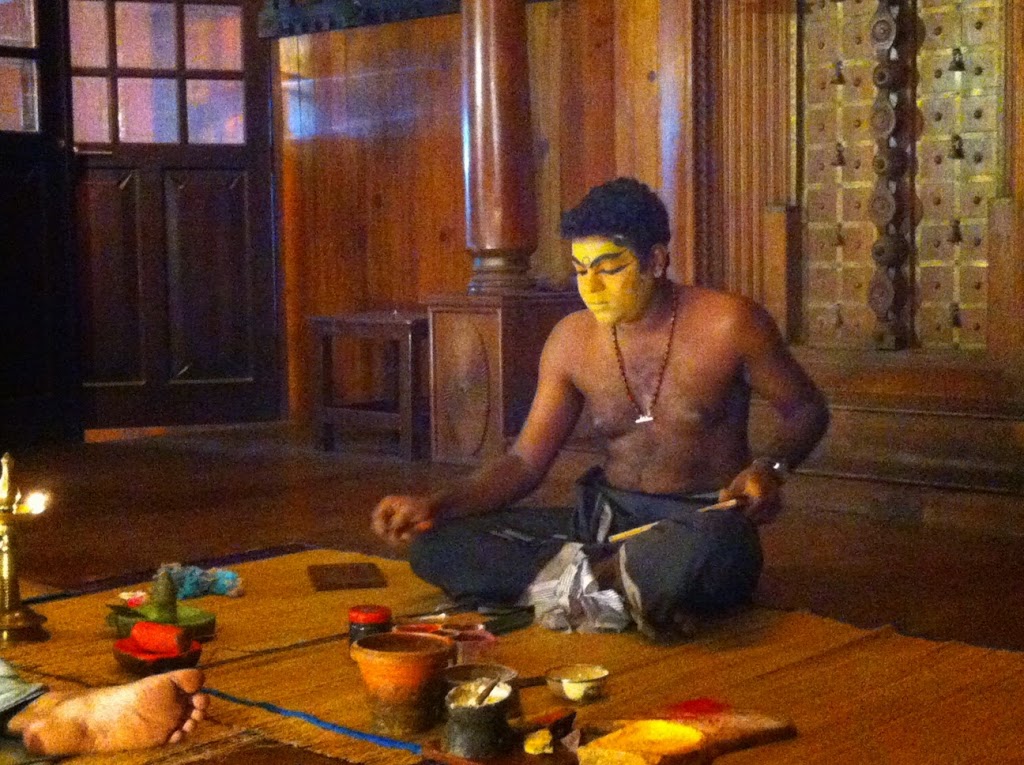 |
| The make up is all natural and made from plants, into a paste by adding water. |
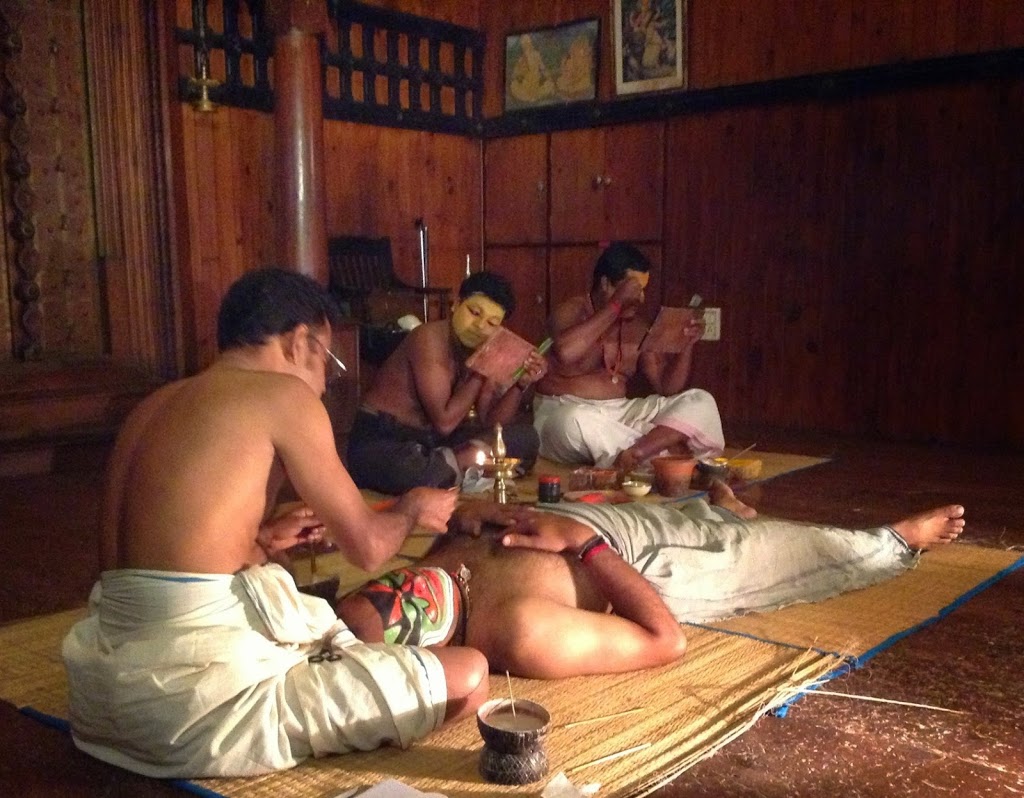 |
| The most complex make up of the key character involves the extra step of an additional artist adding the intricate details. |
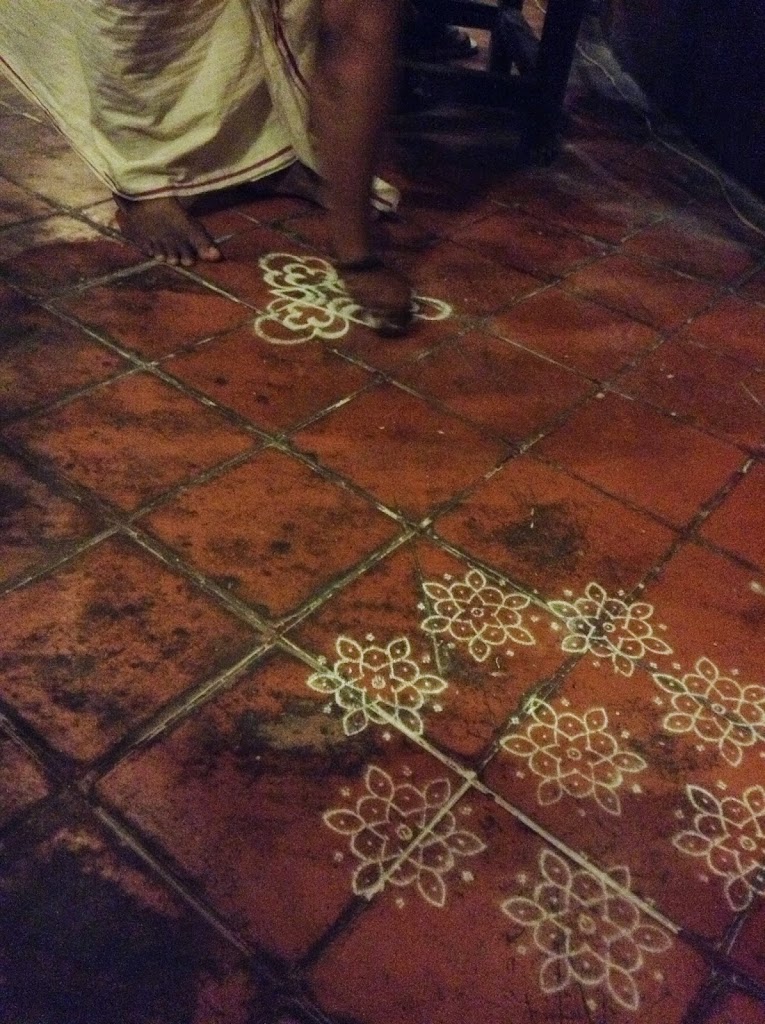 |
| The floor in front of the stage, and on the stage receives painted stampings, to add to the mood, before the performance begins. |
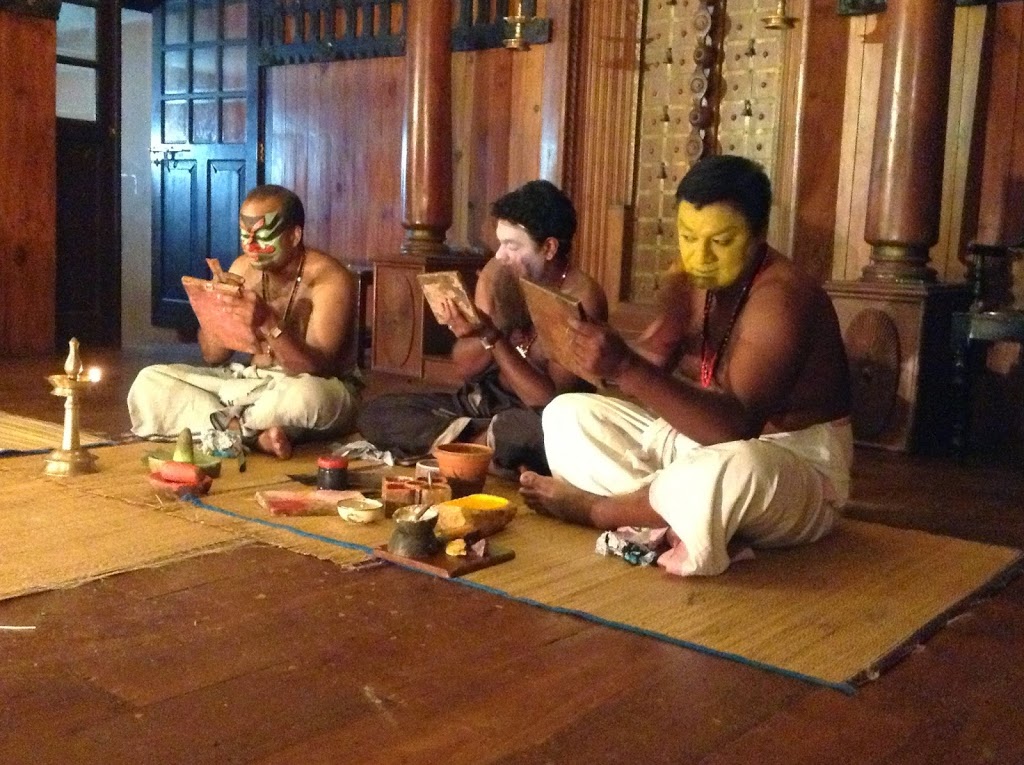 |
| This process of make up application gets the actors physically and emotionally prepared to transform into the various characters. |
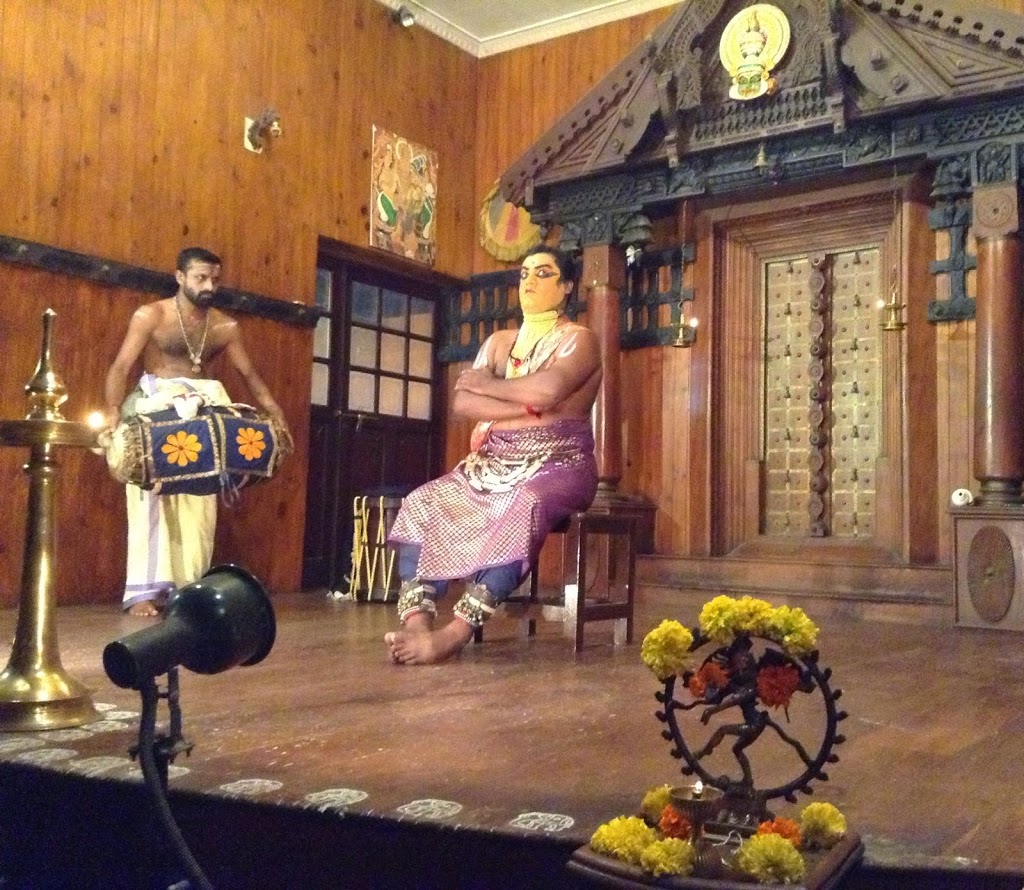 |
| Drummer on the left as the process of explanation of various movements and their meanings begins. |
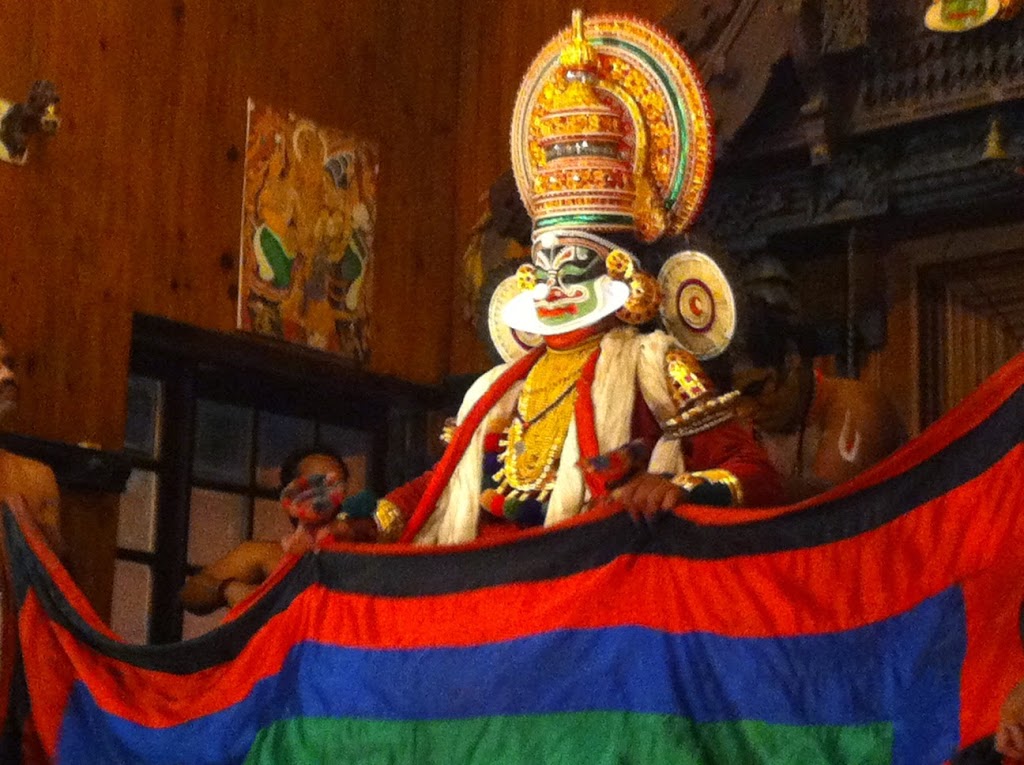 |
| The king makes his first appearance! High drama! |
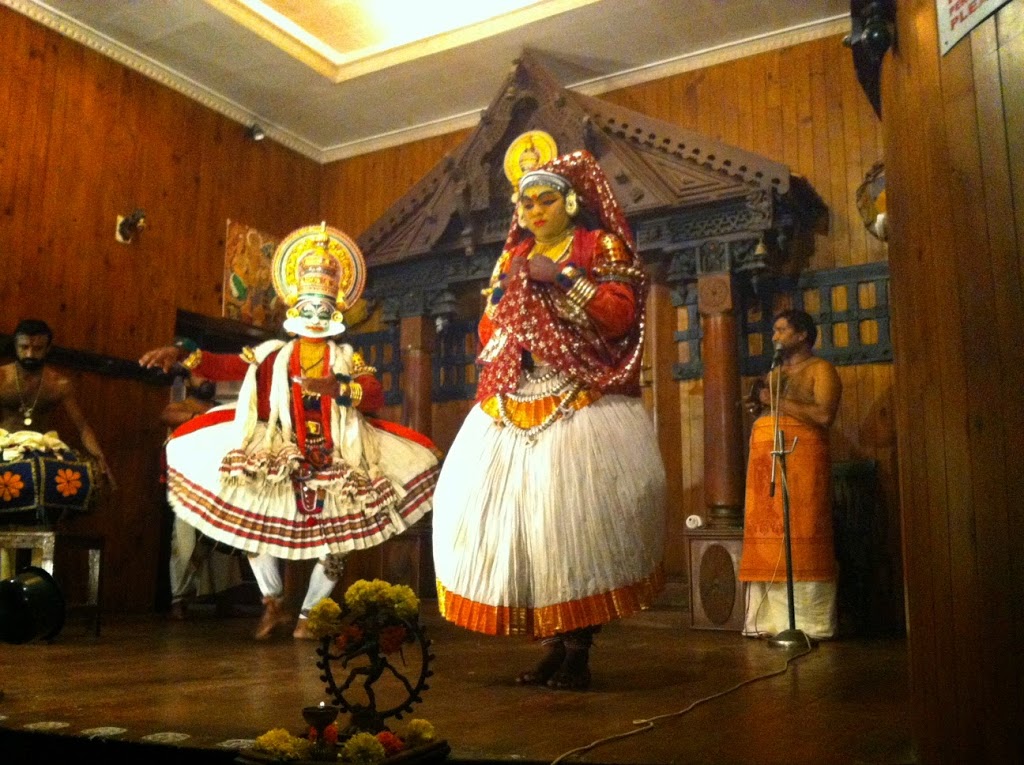 |
| The king tries to woo and then molests the very not interested damsel on the right. |
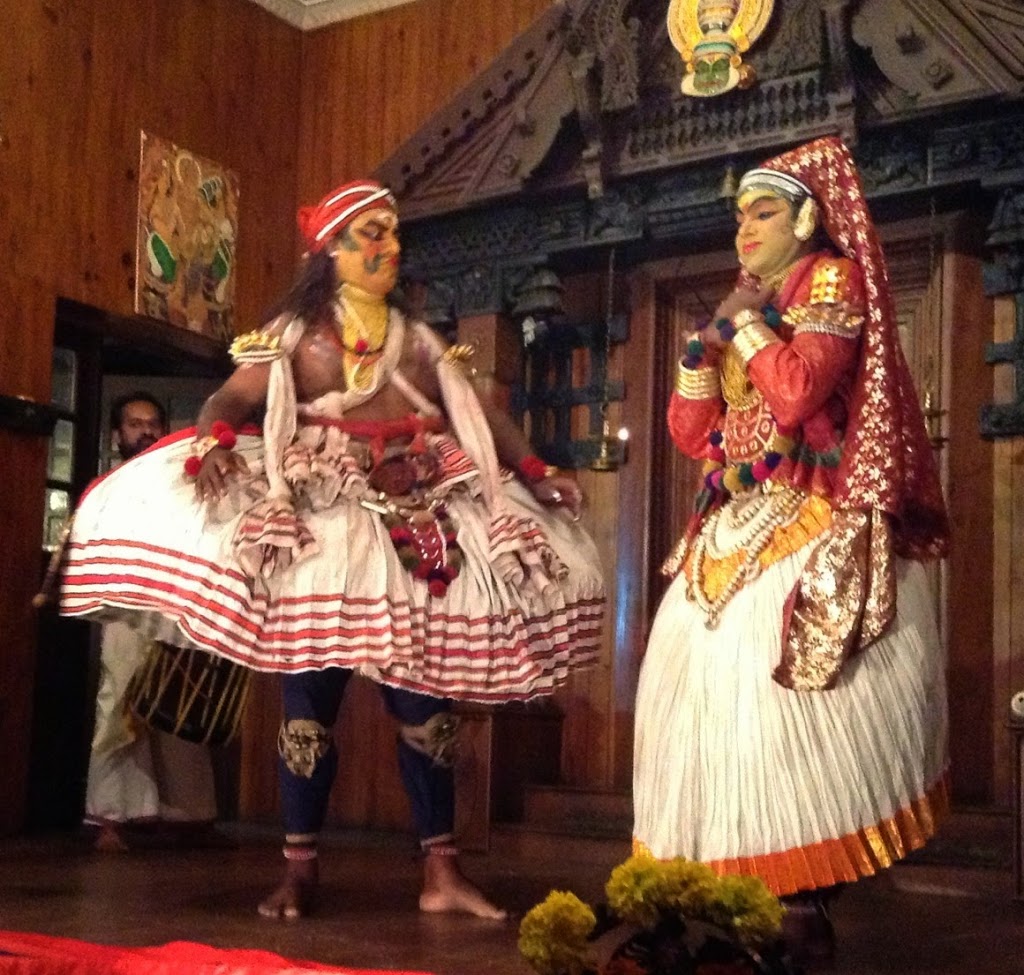 |
| The damsel recounts her traumas with the evil king to her lover, a stable young man. |
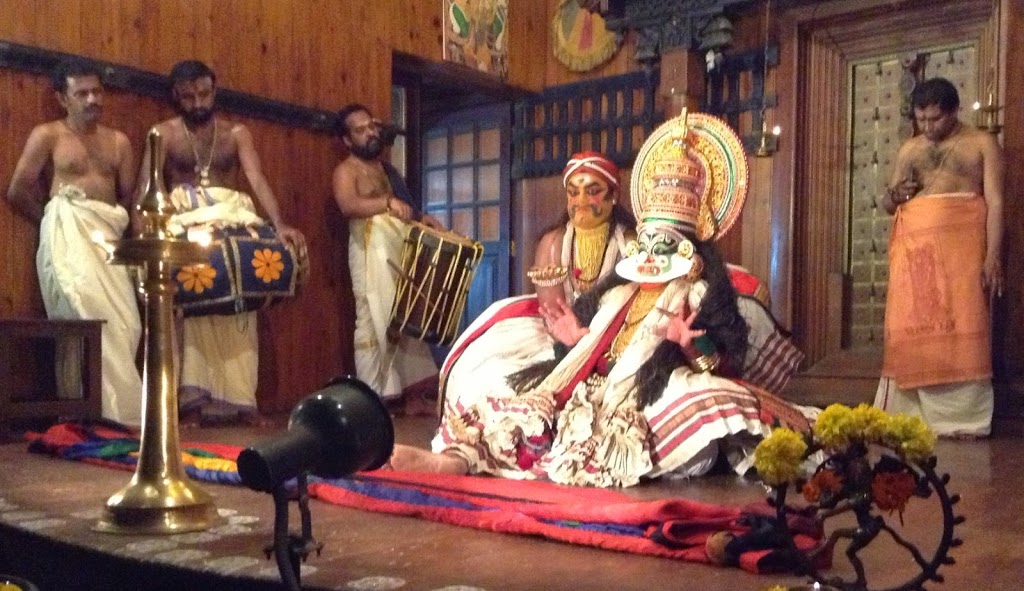 |
| The young man finally kills the king. The king dies a slow painful death. |
For more on Keralan traditional arts, see www.kathakalicentre.com
For a short movie of the Kathakali performance: http://www.youtube.com/watch?v=r7rniWUEFMc
We woke up the next morning at 6 a.m. to go to a yoga class at the same cultural center followed by an early morning meditation practice at the cultural center, Morning Ragas.
Ragas are magical music, they are music used for healing. Based on a concept of alignment of musical notes to the 7 chakras, or energy centers in the body, Ragas have mysterious power. There are over 100,000 ragas in India, each with different combinations of sounds and rhythms, for every situation, every condition. So powerful were the vibrational or energetic Ragas that, for centuries, Ragas were considered a form of medicine.
From a personal perspective, we can attest to the incredibly relaxing and “haunting” Ragas we were treated to – an unforgettable combination of tabla drum and verbal chanting along with sitar.
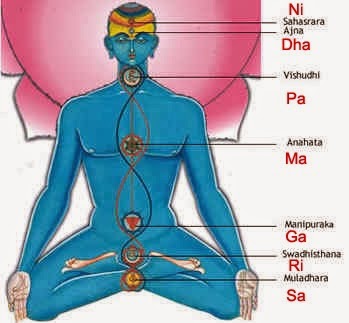 |
| Ragas and chakras. |
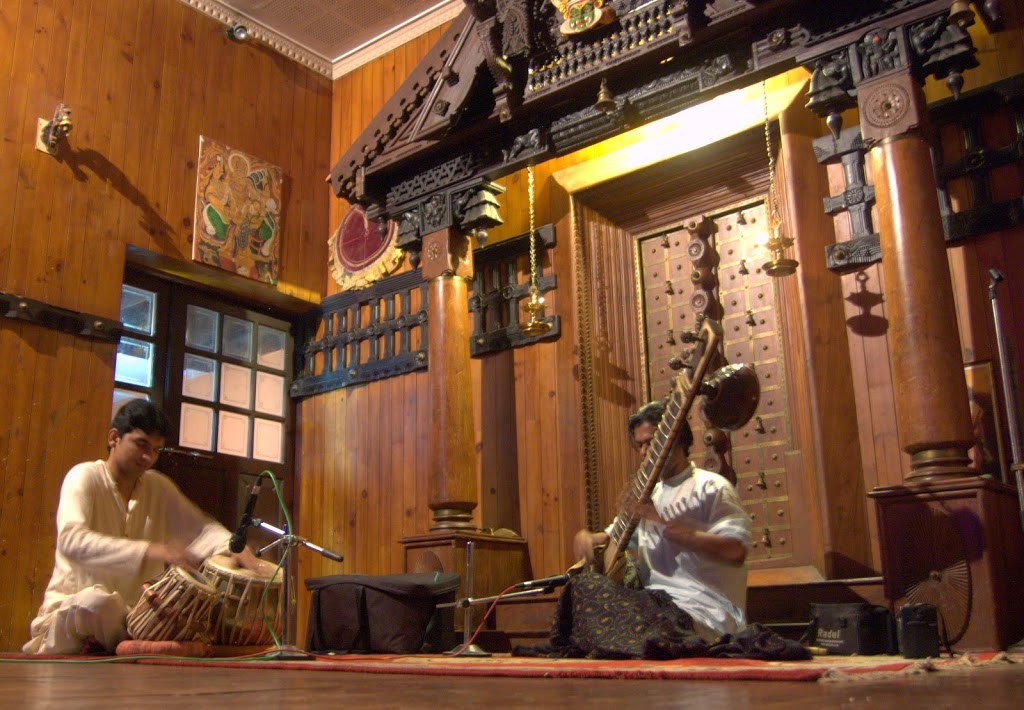 |
| Morning ragas. Cushions are placed on the stage for those that show up for meditation. Just four of us today. |
The beauty of women in Kerala earned the region a reputation that goes back centuries. In fact, the powerful kings of Northern India, from Gujarat, a mostly Muslim population, were fond of traveling South to Kochi and embrace, so to speak, local culture. The gorgeous painting miniatures that can still be found in antique stores tell the tales of Hindu concubines to Muslim lords…

The charms and amorous entanglements of Keralan women were not only captured in miniature paintings. They also adorn the walls of the Dutch Palace ~ a splendid 500 year old structure that has wall to wall, intricate and beautifully painted murals, with many buxomy females.































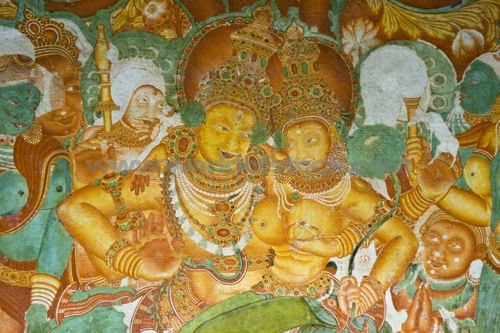

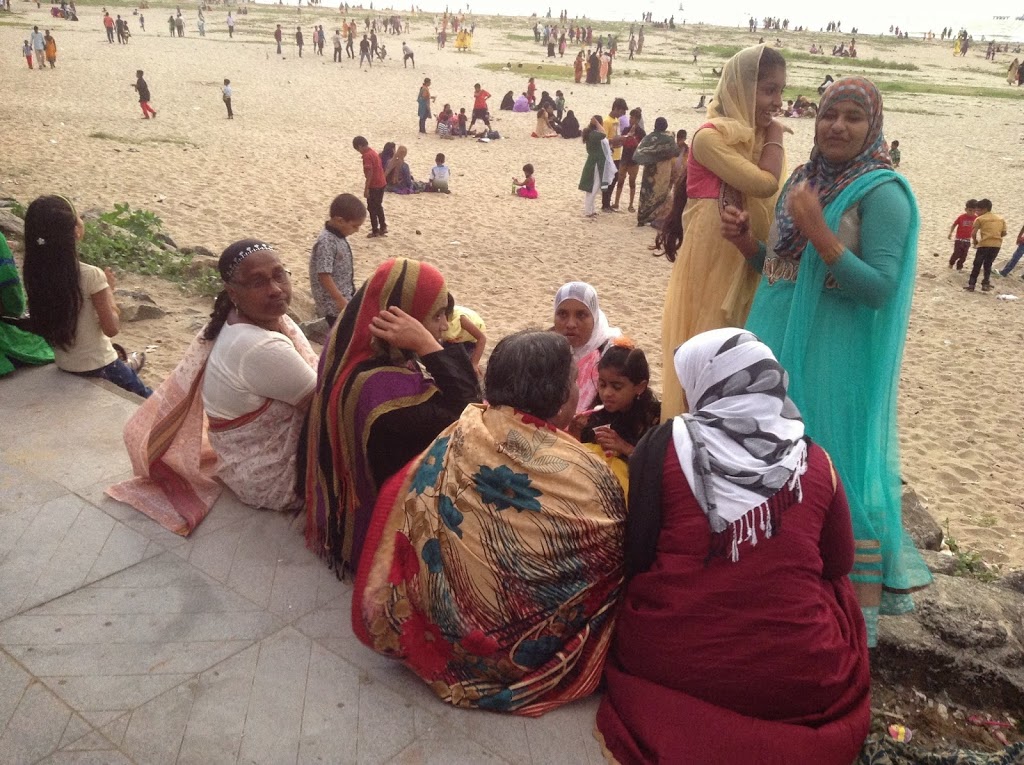
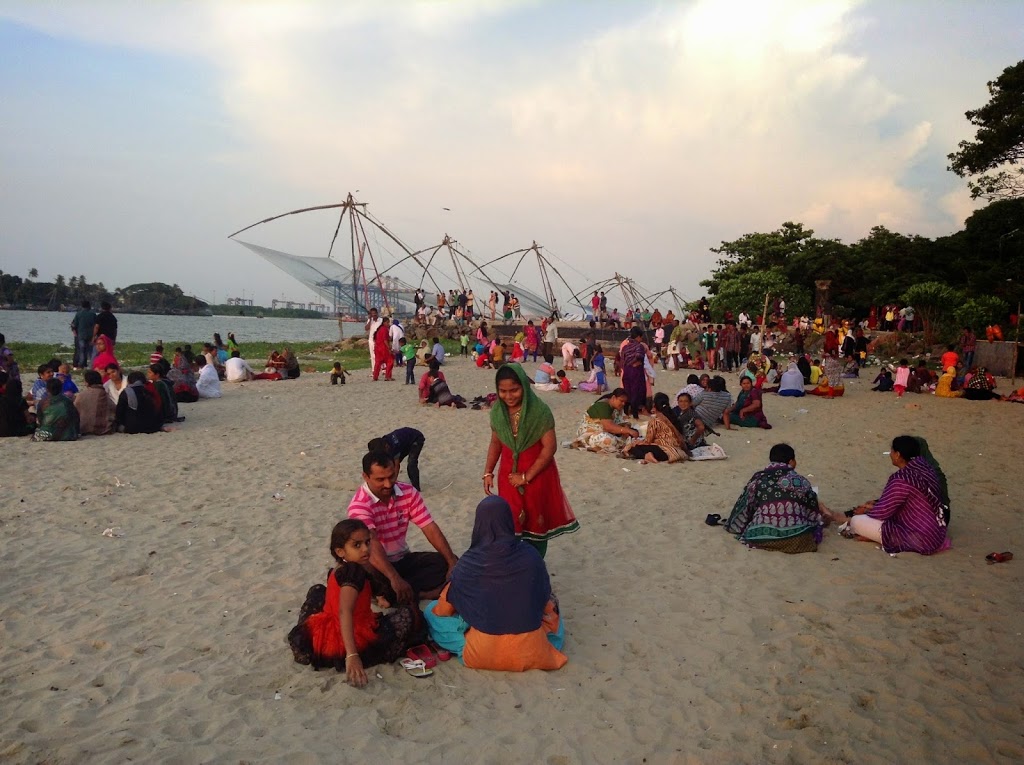
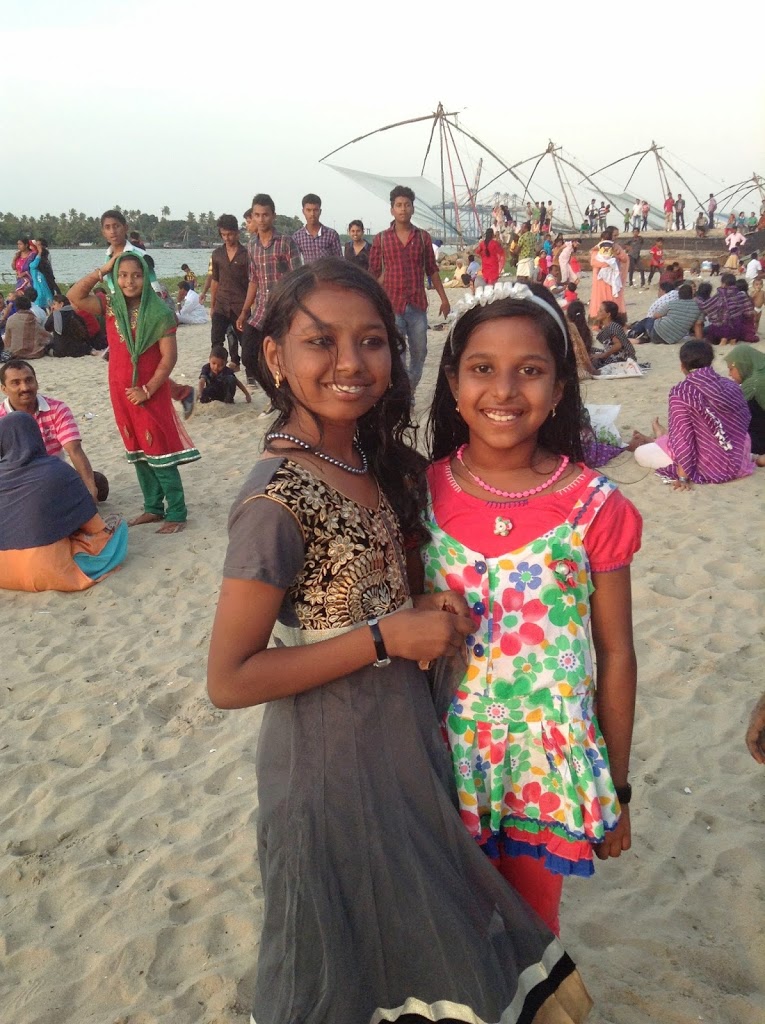
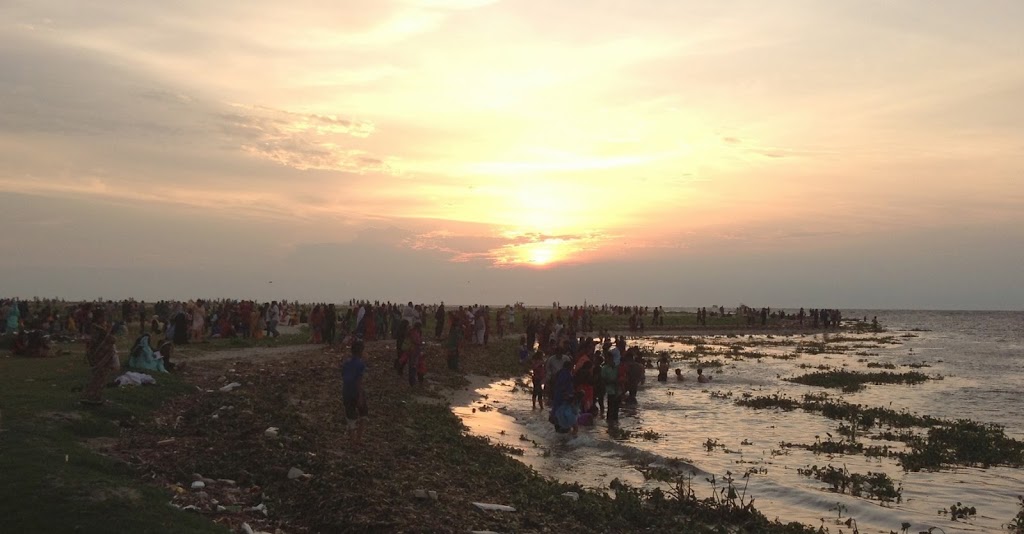


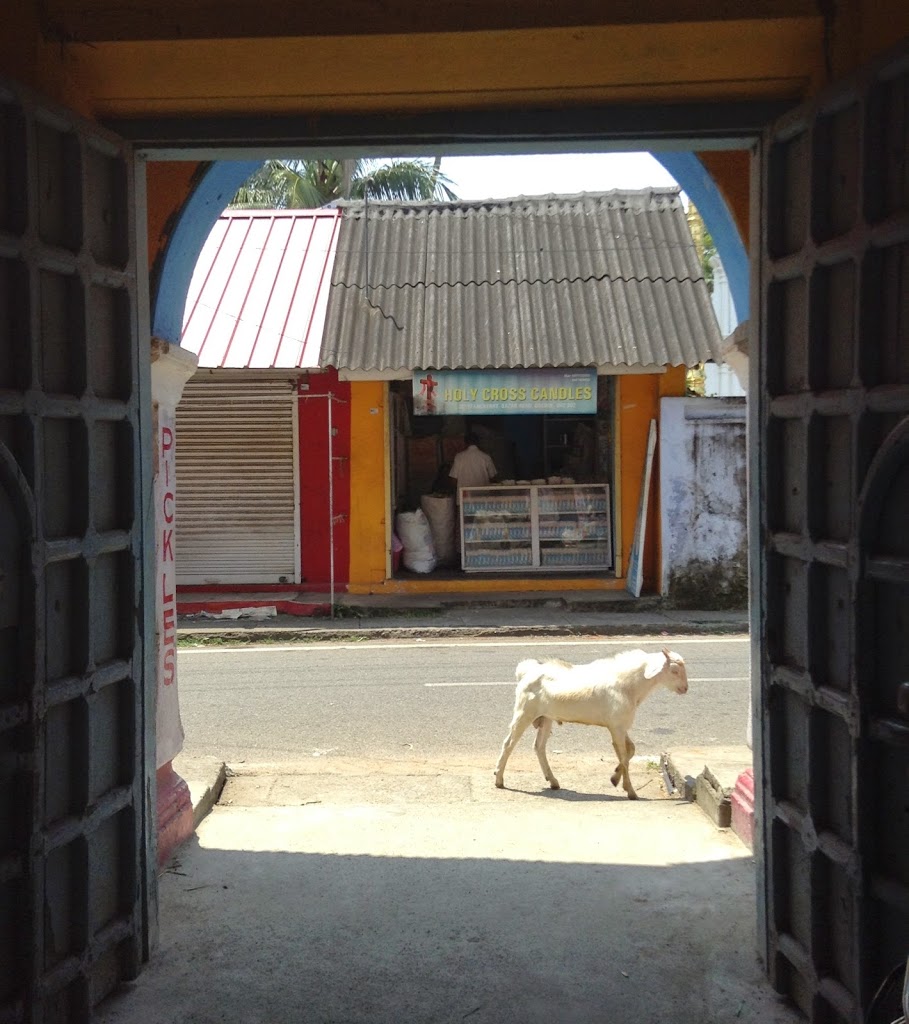
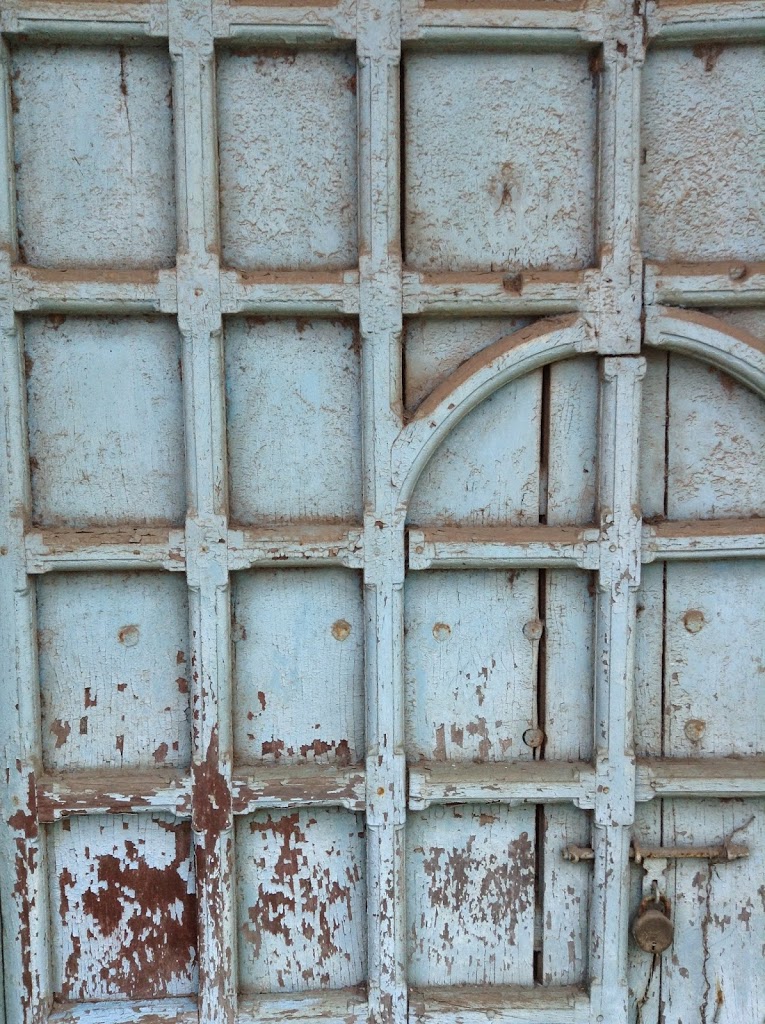
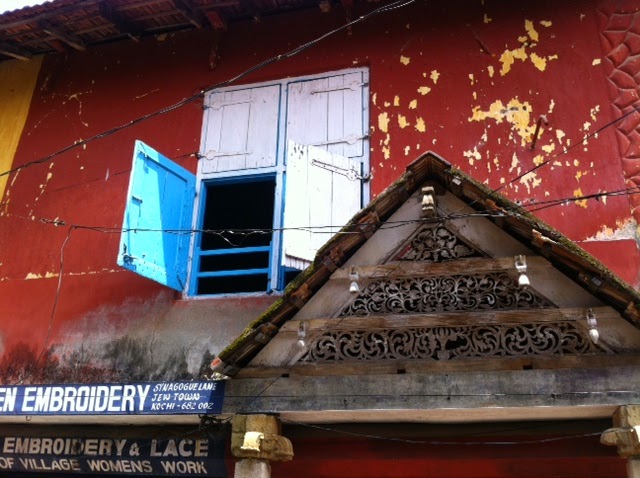

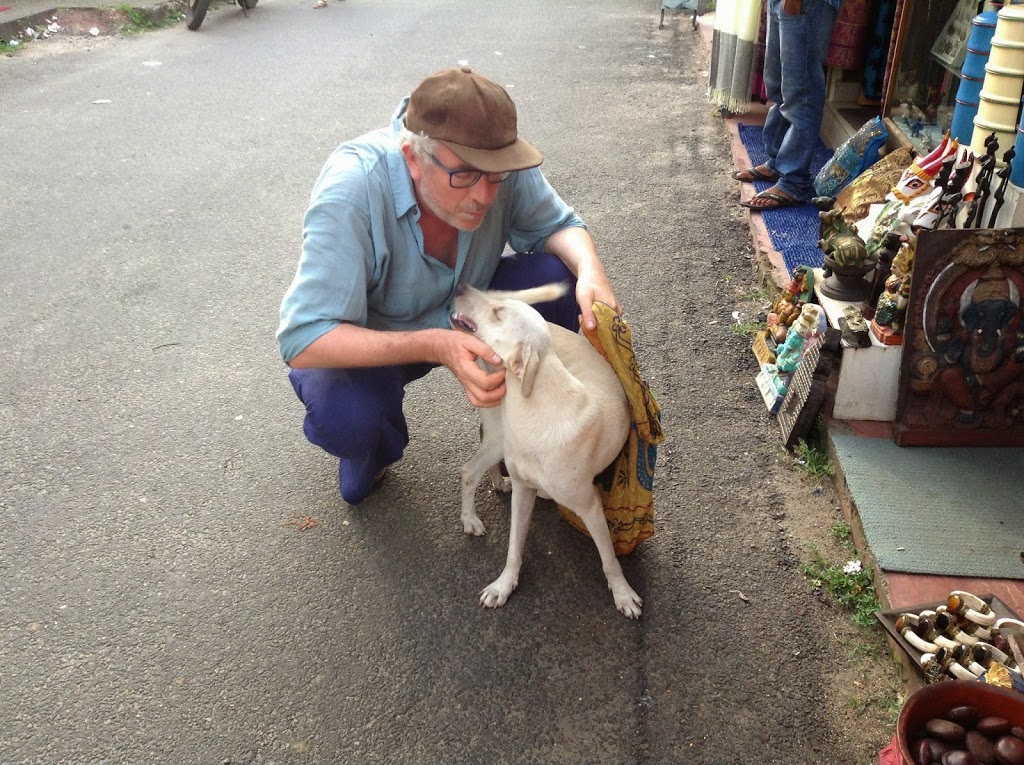

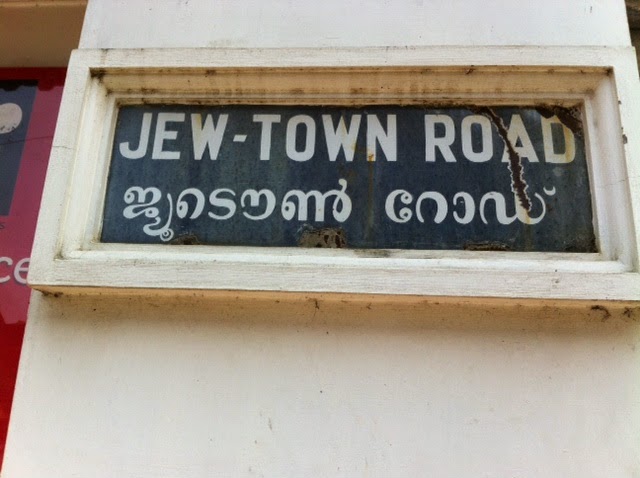


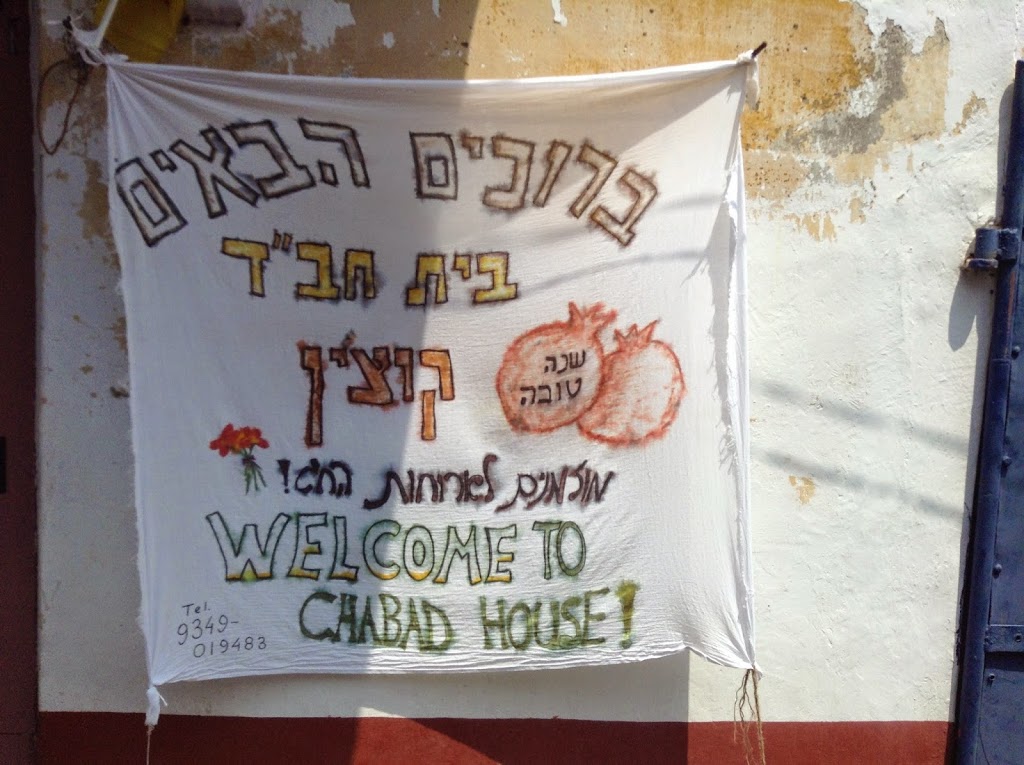
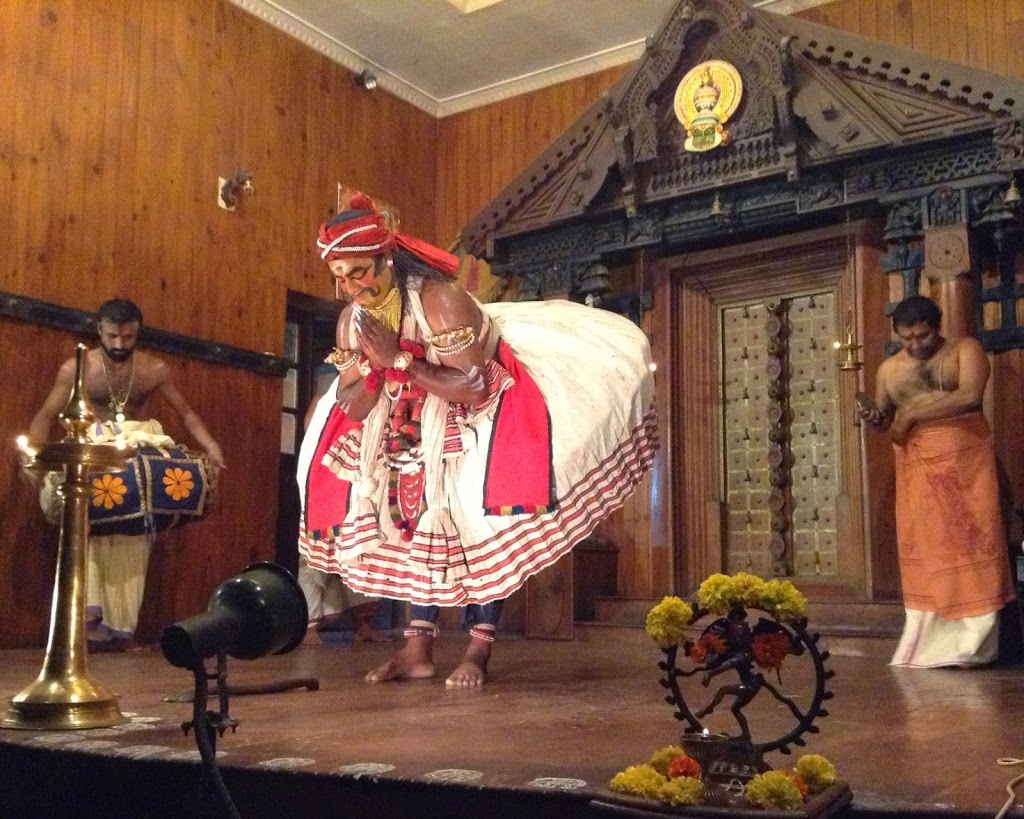

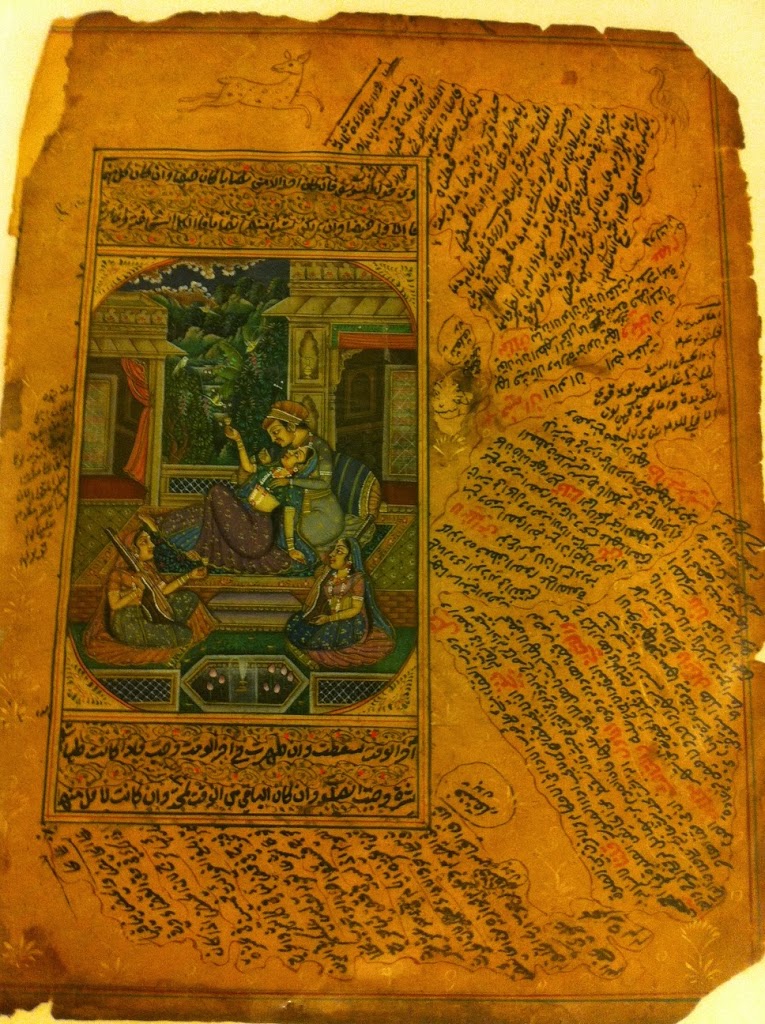
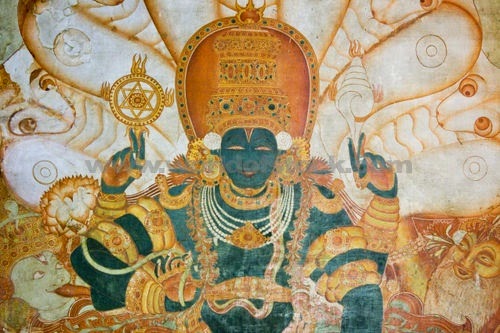
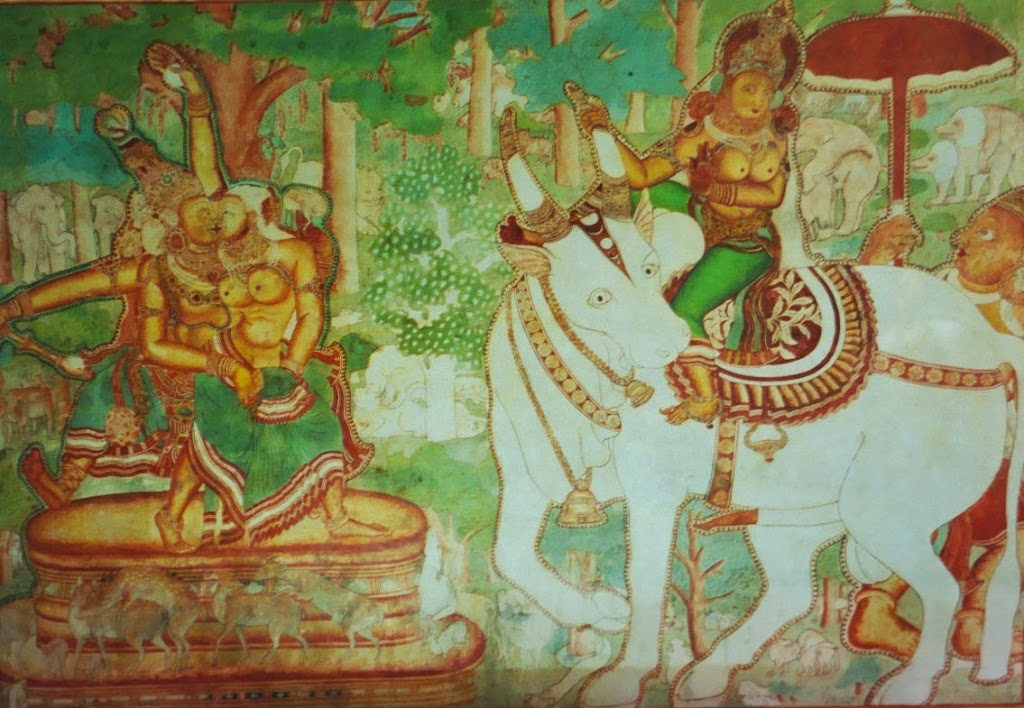
Good one
Thank you!
It’s really nice to read your side of the story, Peta. I had mixed feelings about Kochi, but Kathakali and the food were definitely the highlights of my stay in Fort Kochi. I had never seen anything like Kathakali and was thoroughly amazed by the colors, the music, the facial expressions, everything!
Kochi was definitely a highlight of Southern India for us. Between the Kathakali, the water front, the food and the spice quarter with it’s gorgeous architecture, we were entranced.
Thanks for reading!
Peta
😍 You are getting us very excited to visit there. We are checking into weather and marinas now to see if it’s a possibility 🙏
Great!! We hope to return to Kochin one day, it was definitely a place that resonated with us. Enjoy, enjoy.
Peta